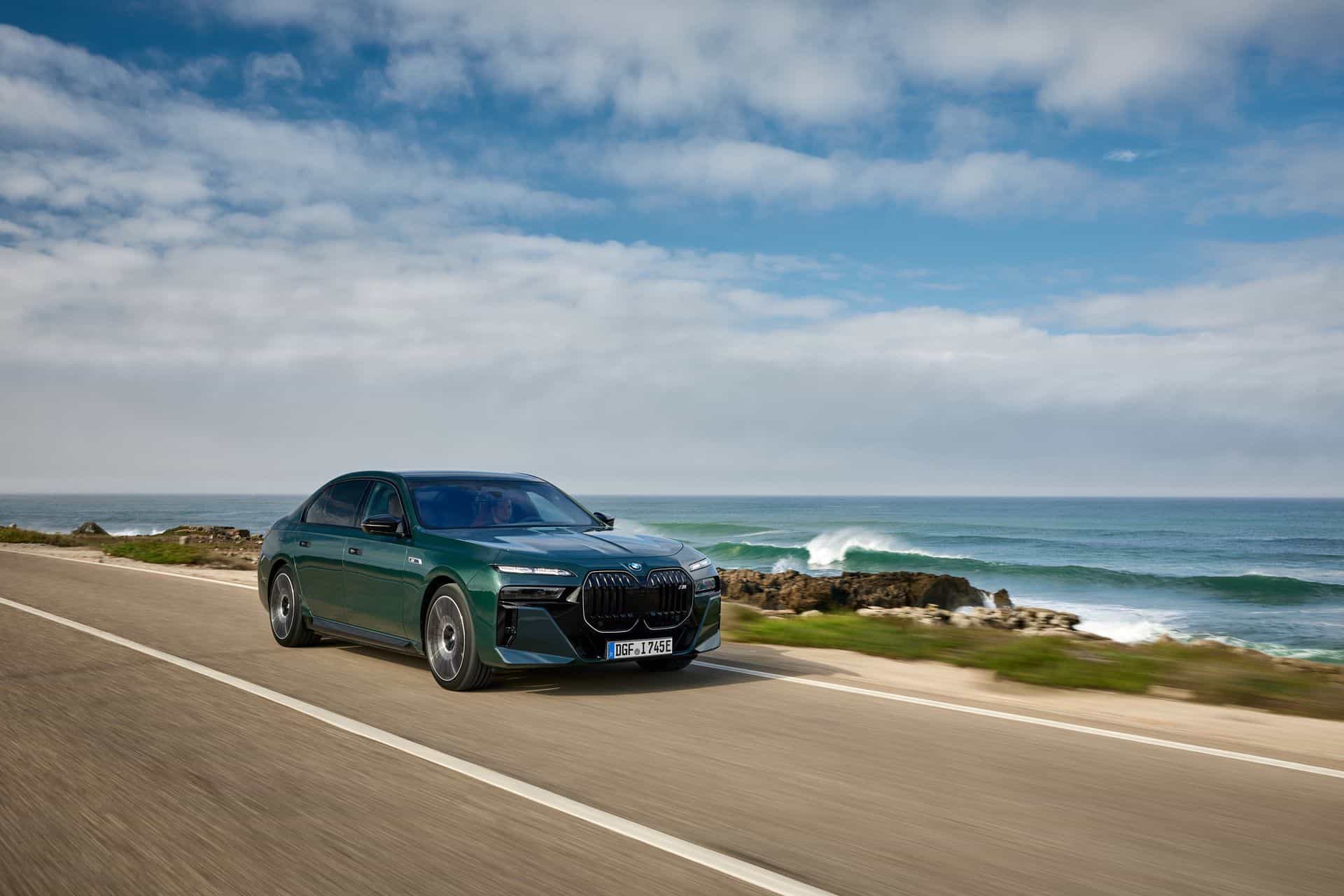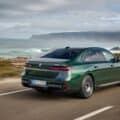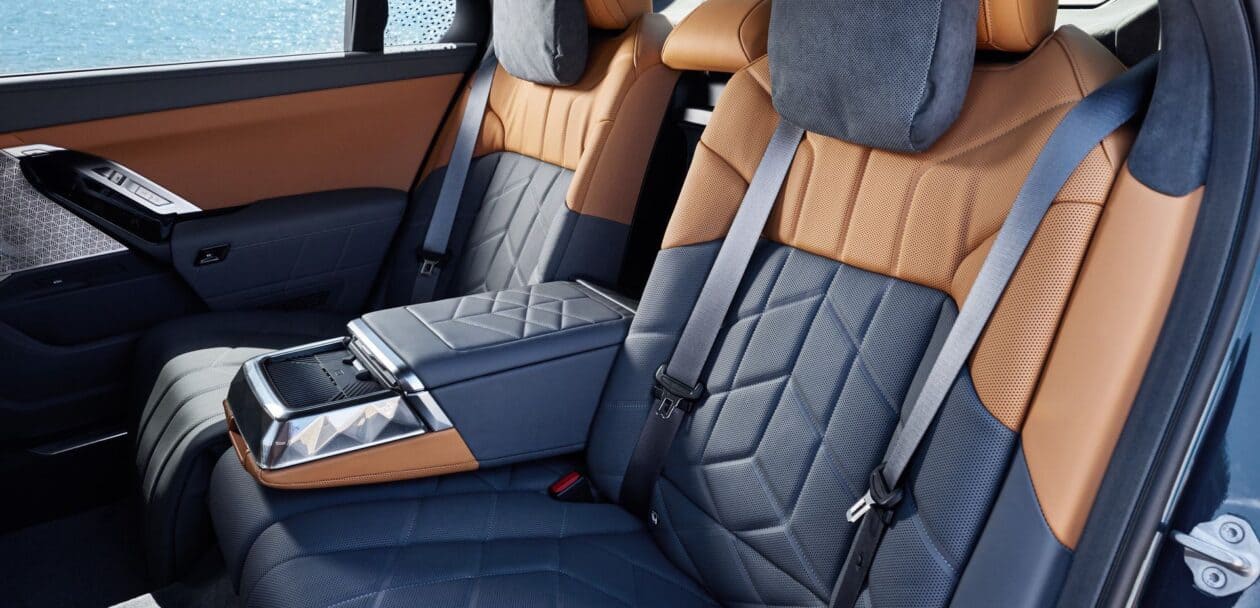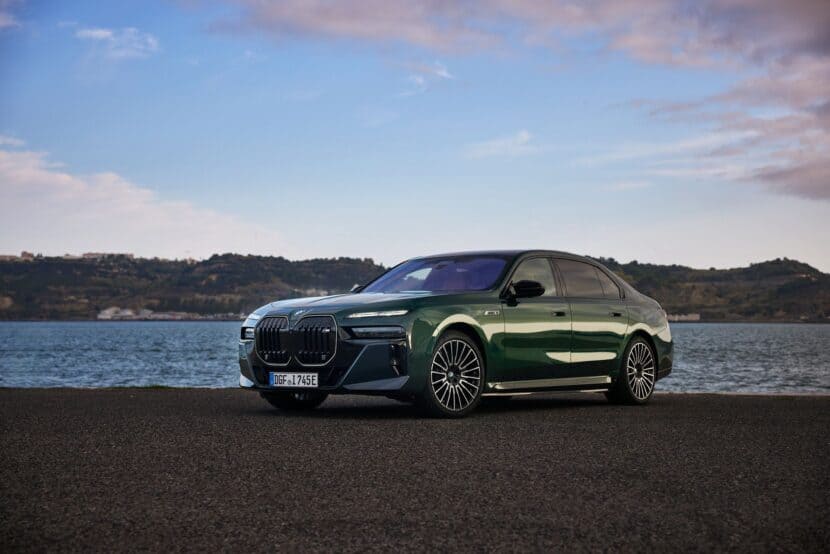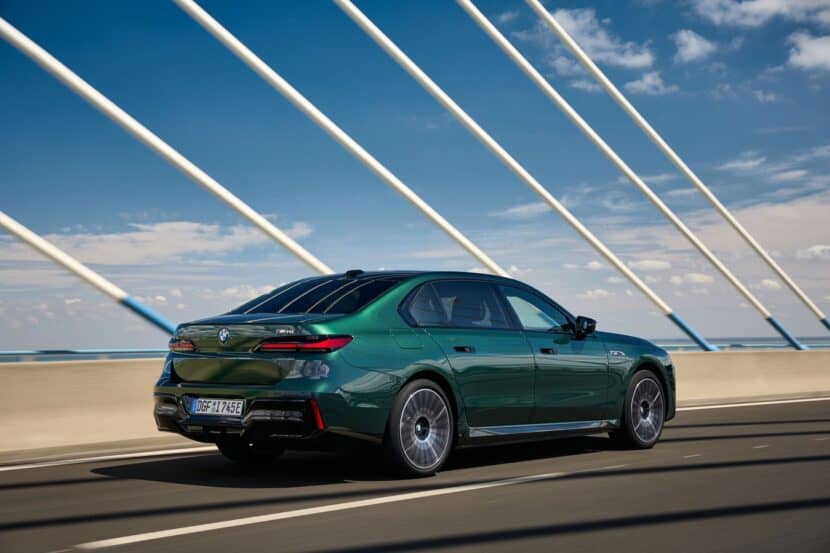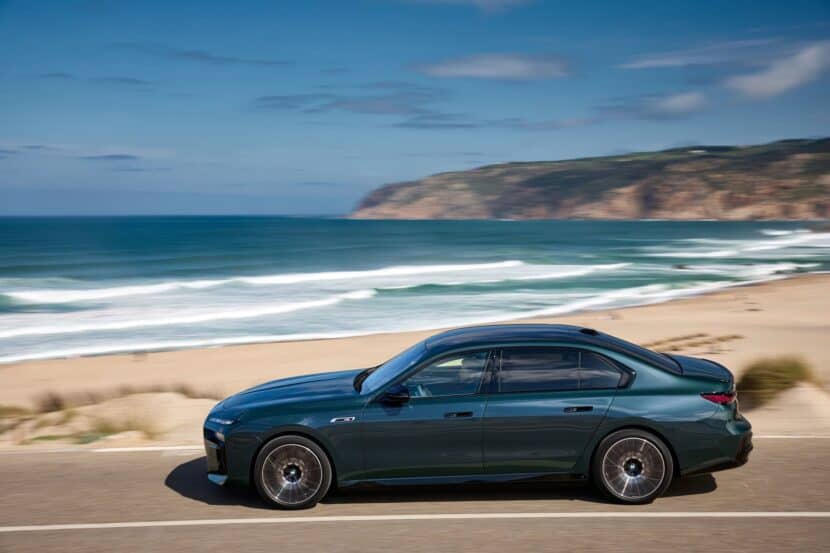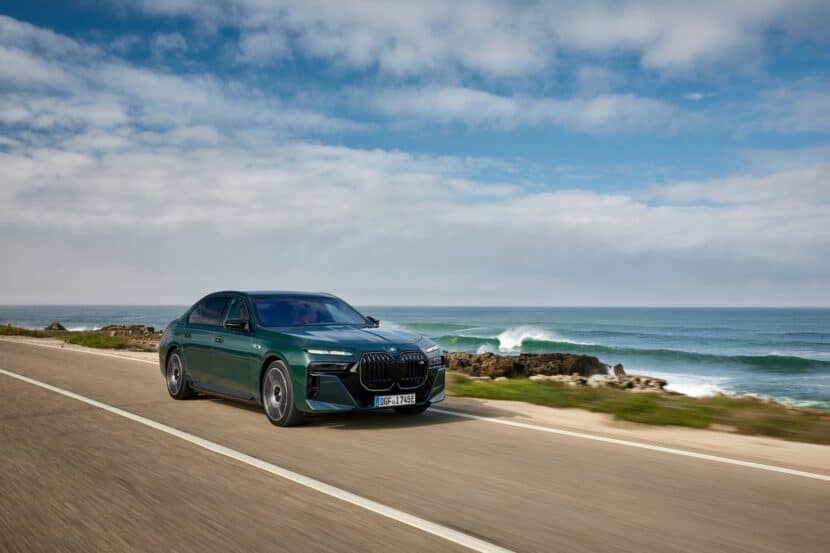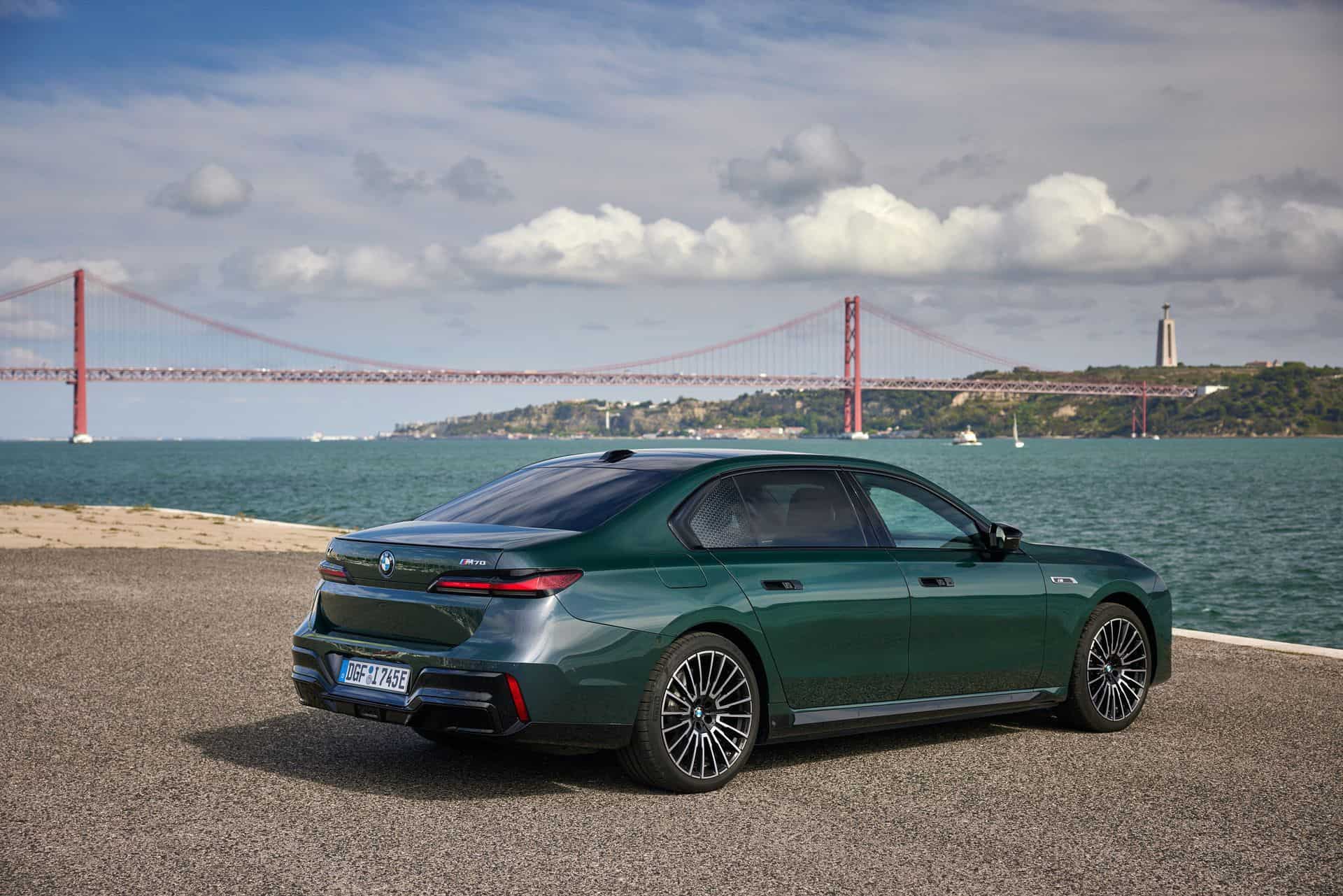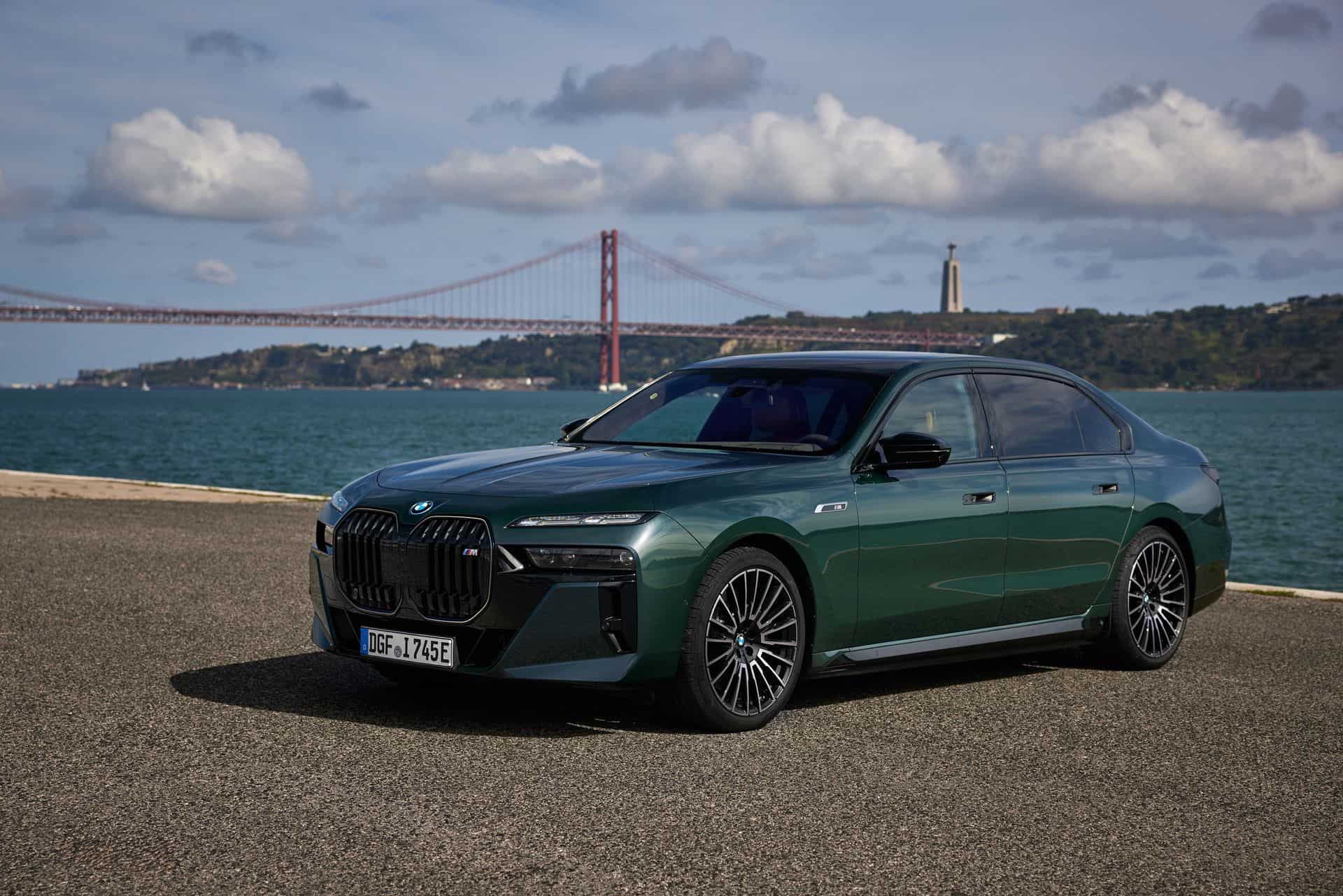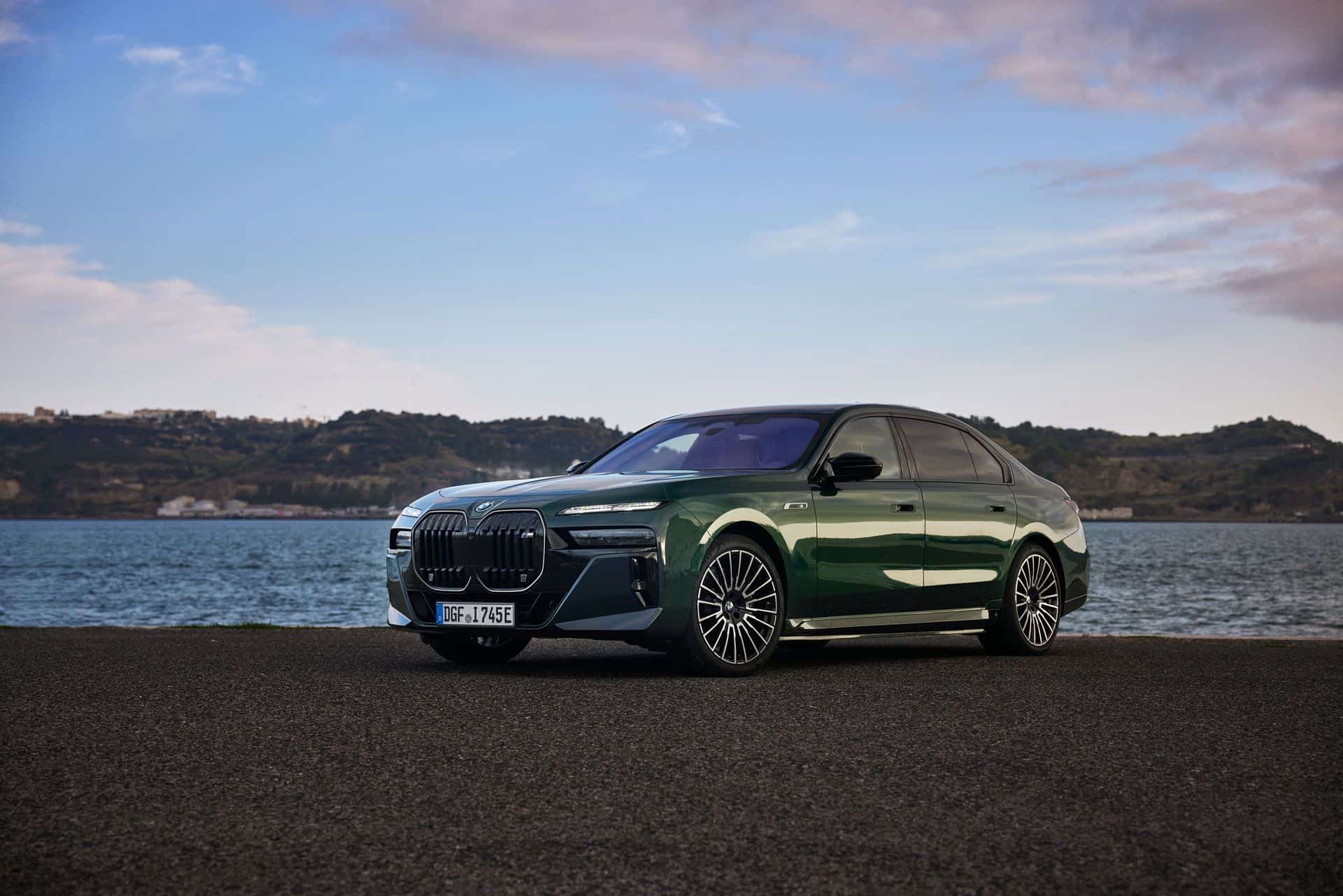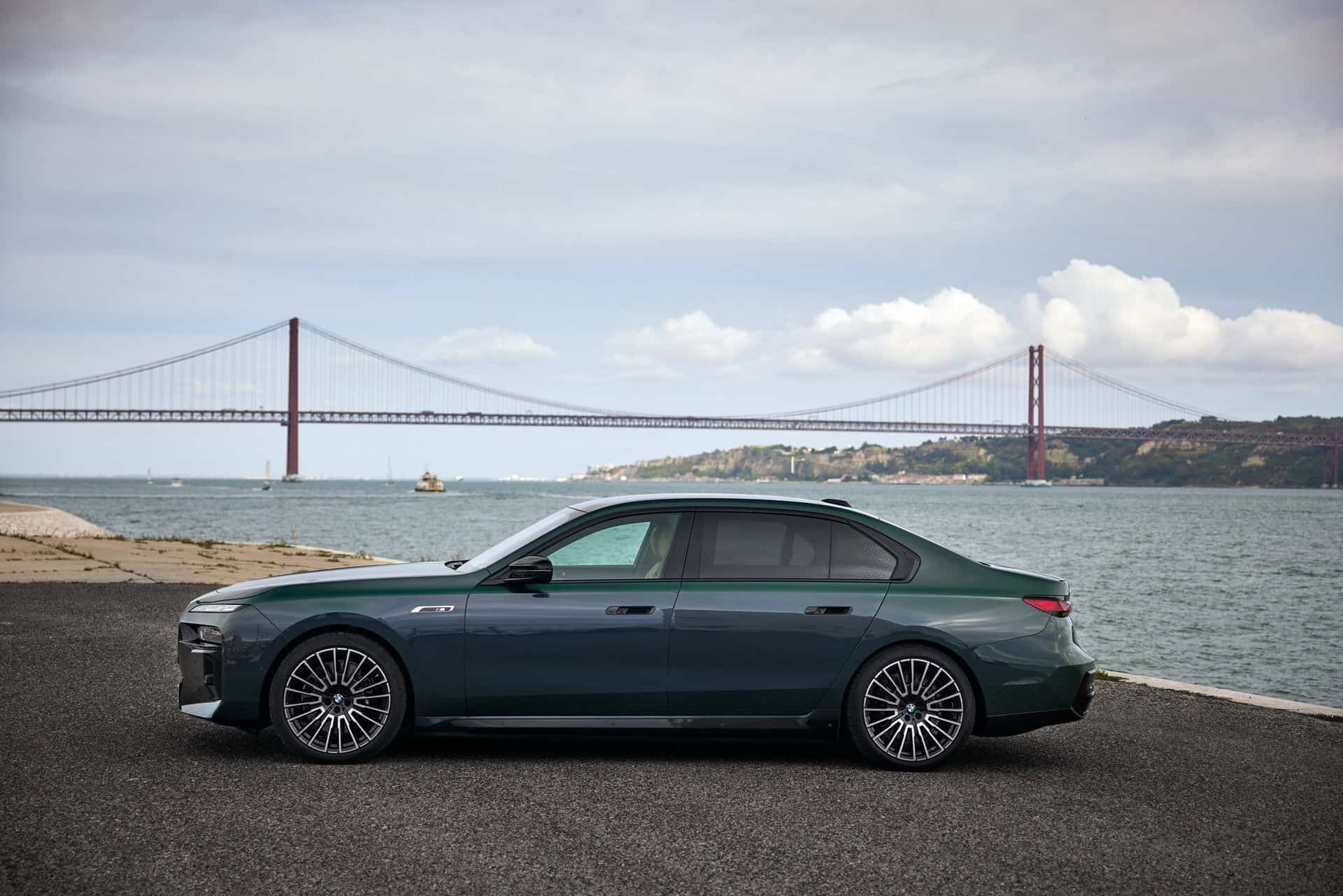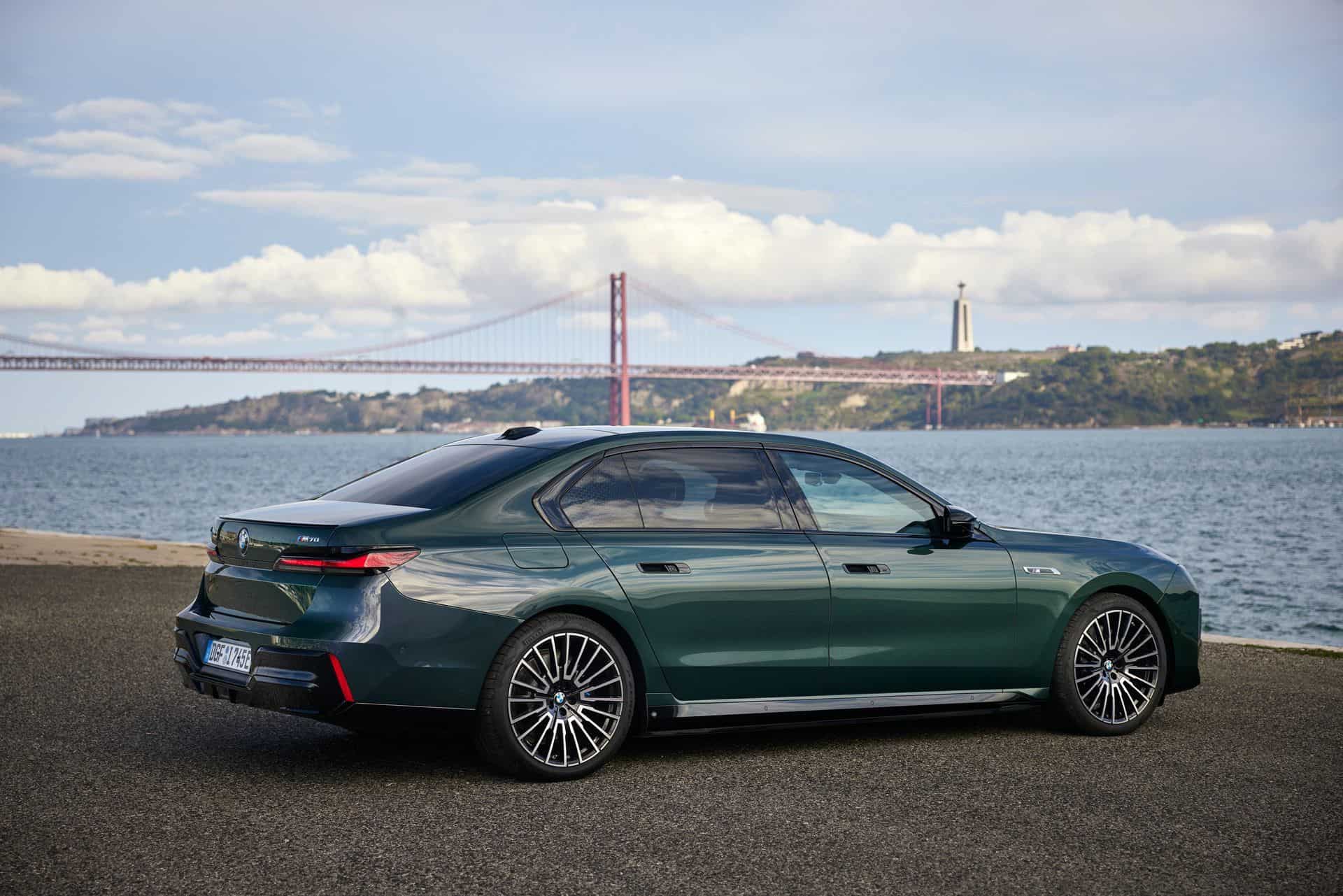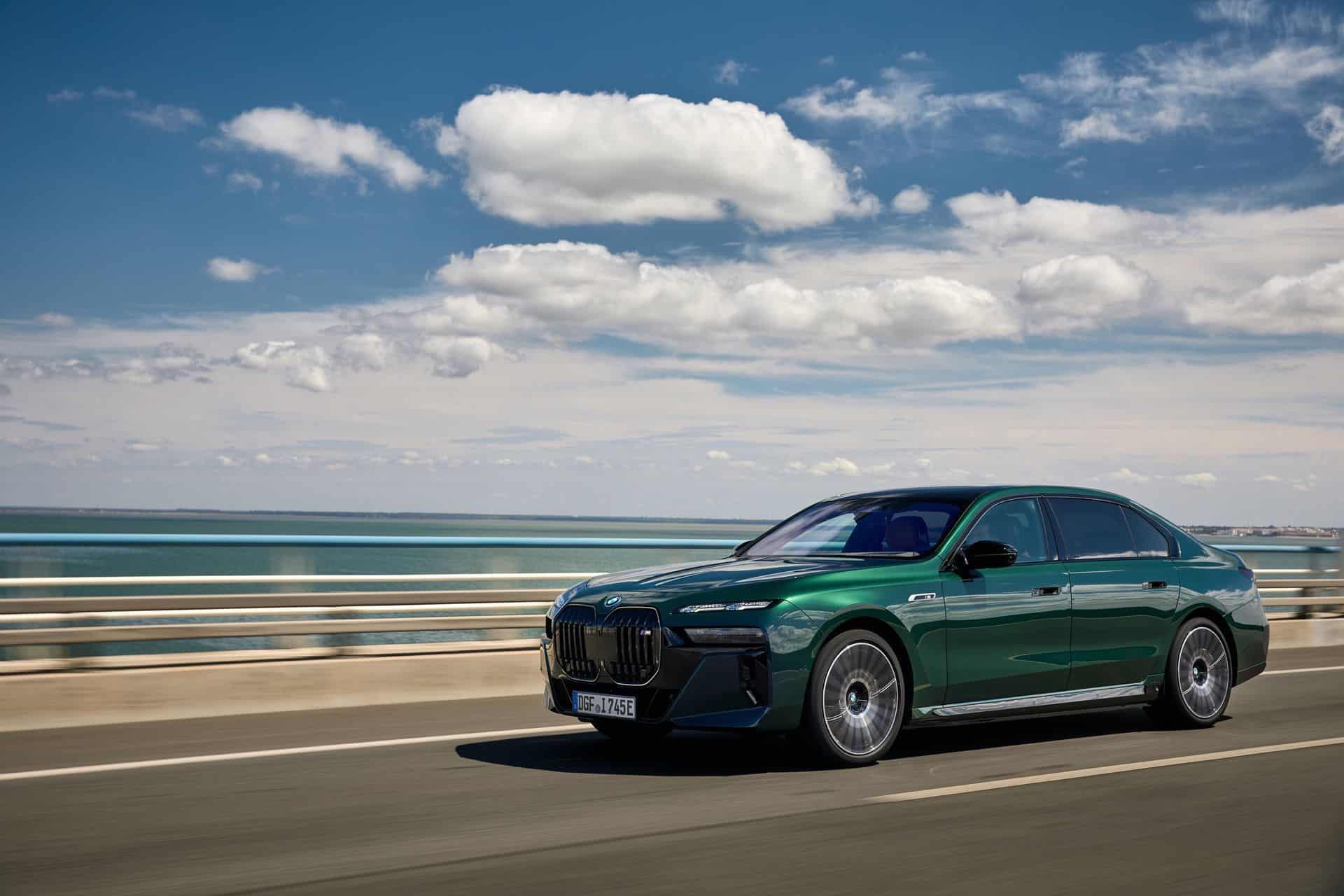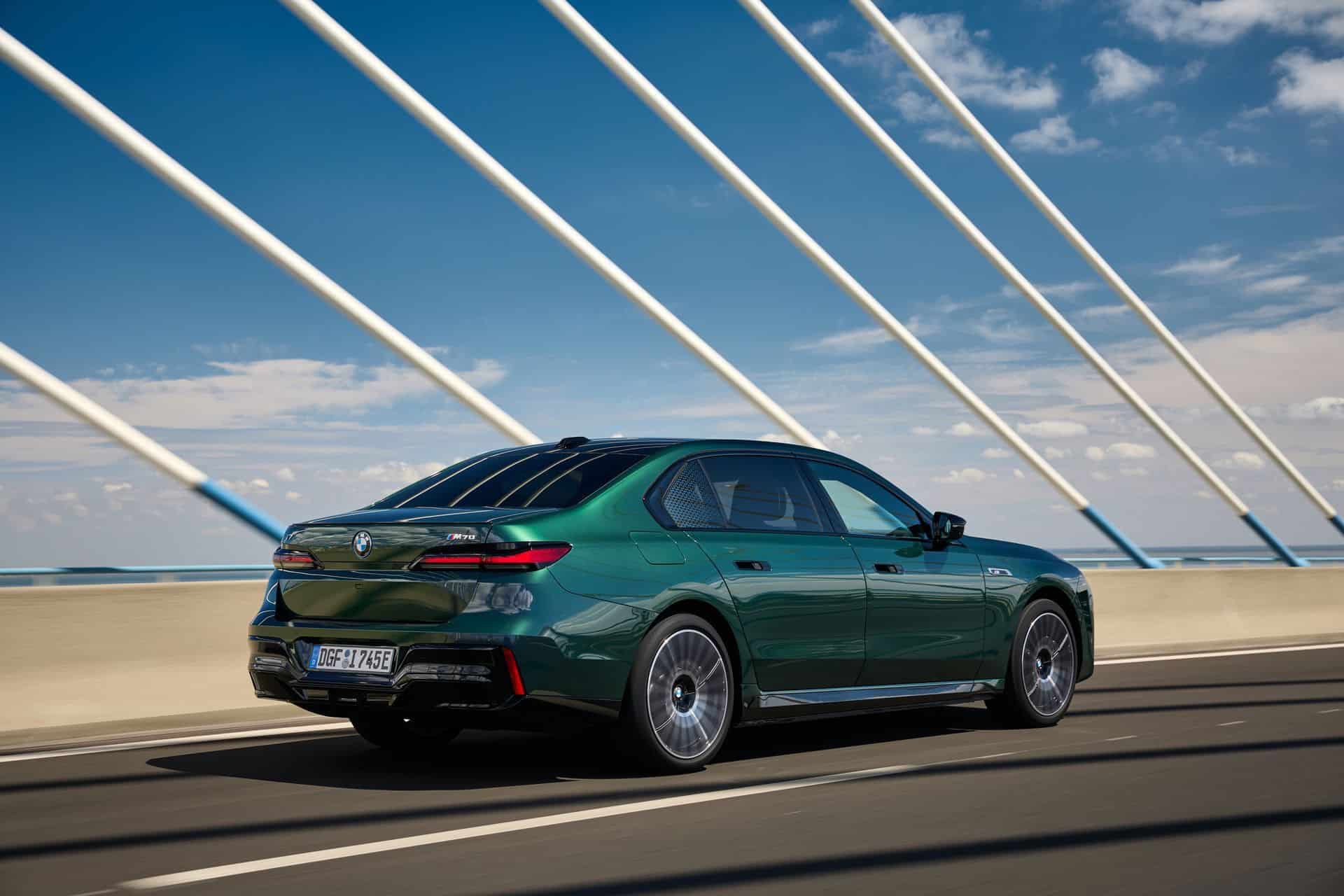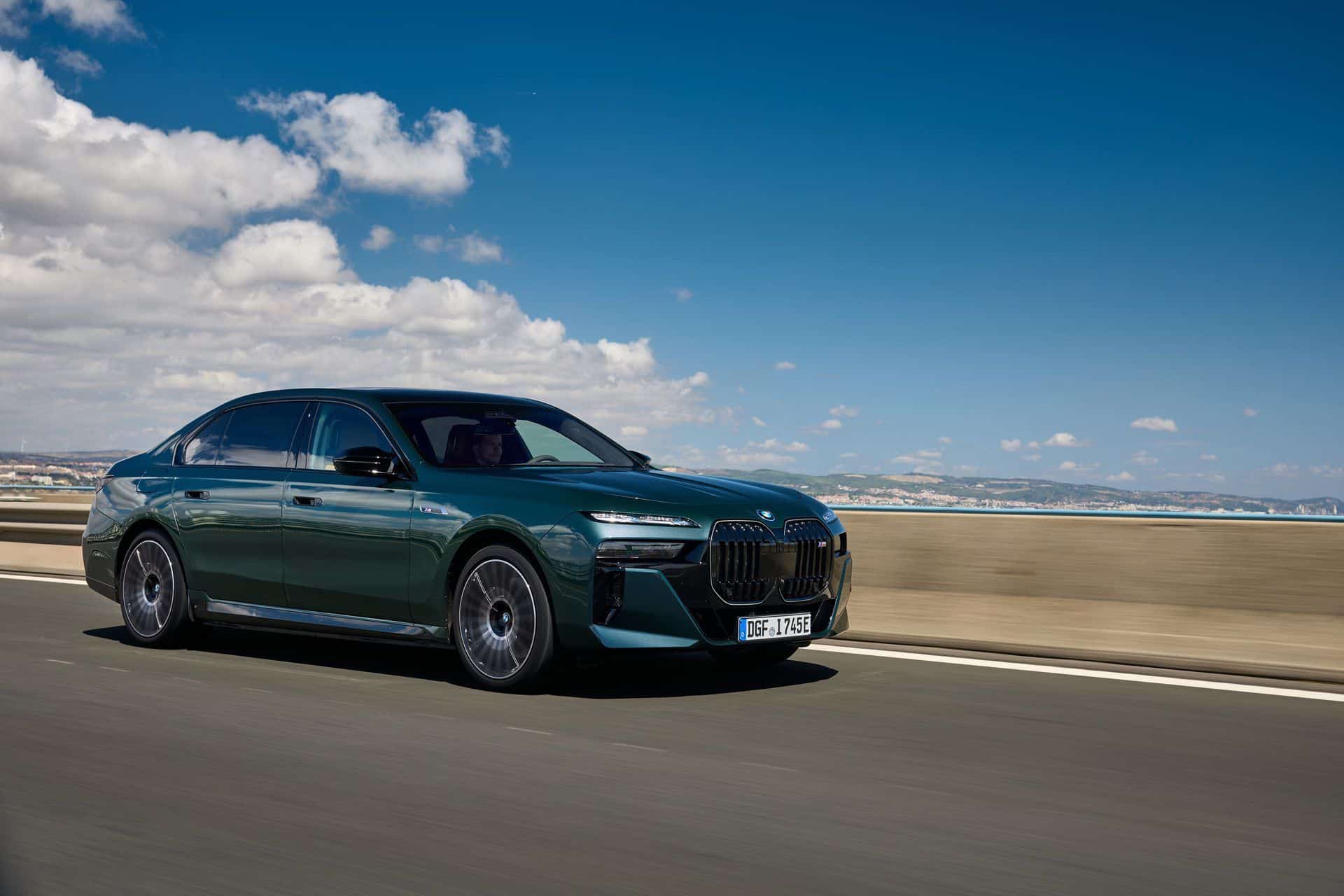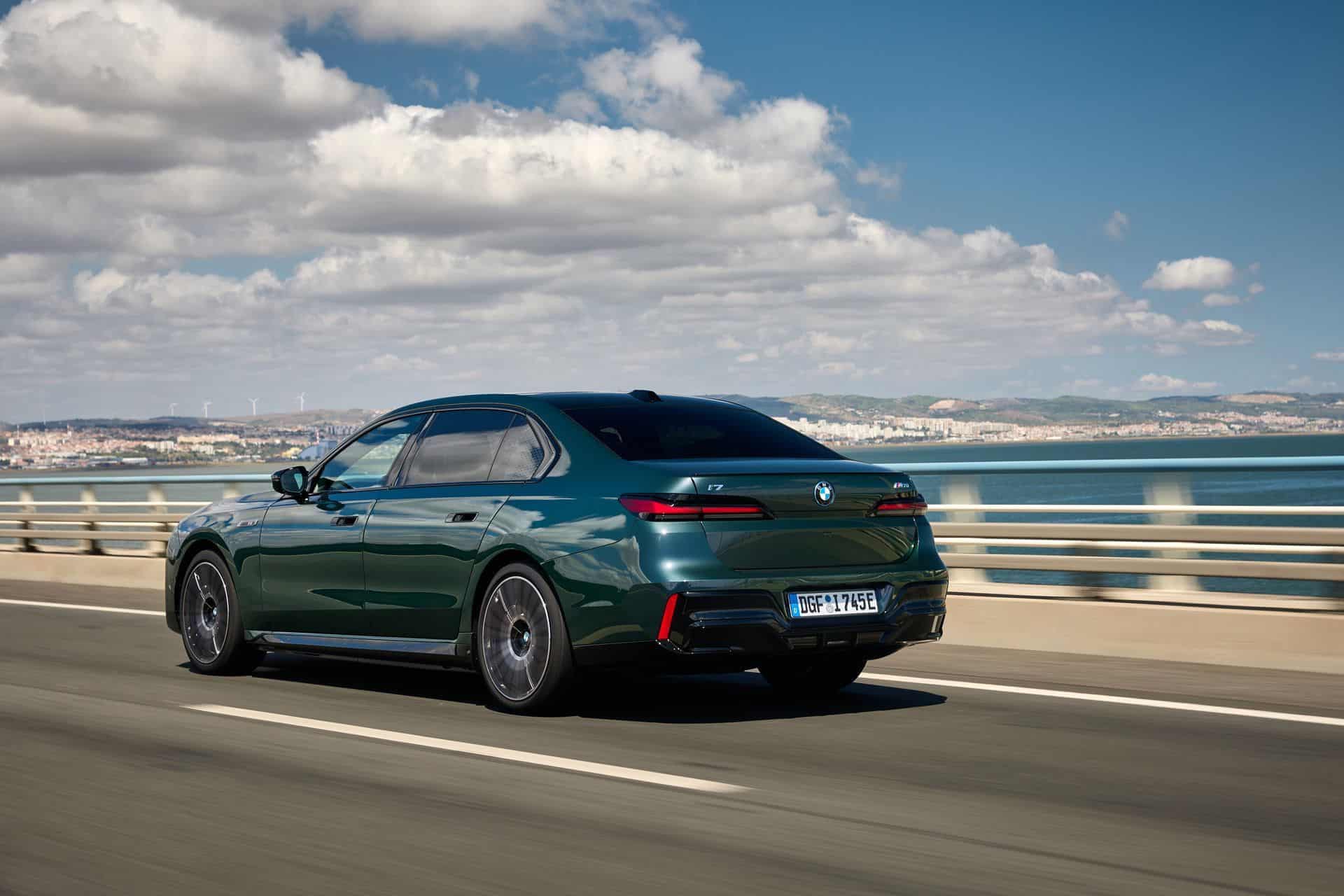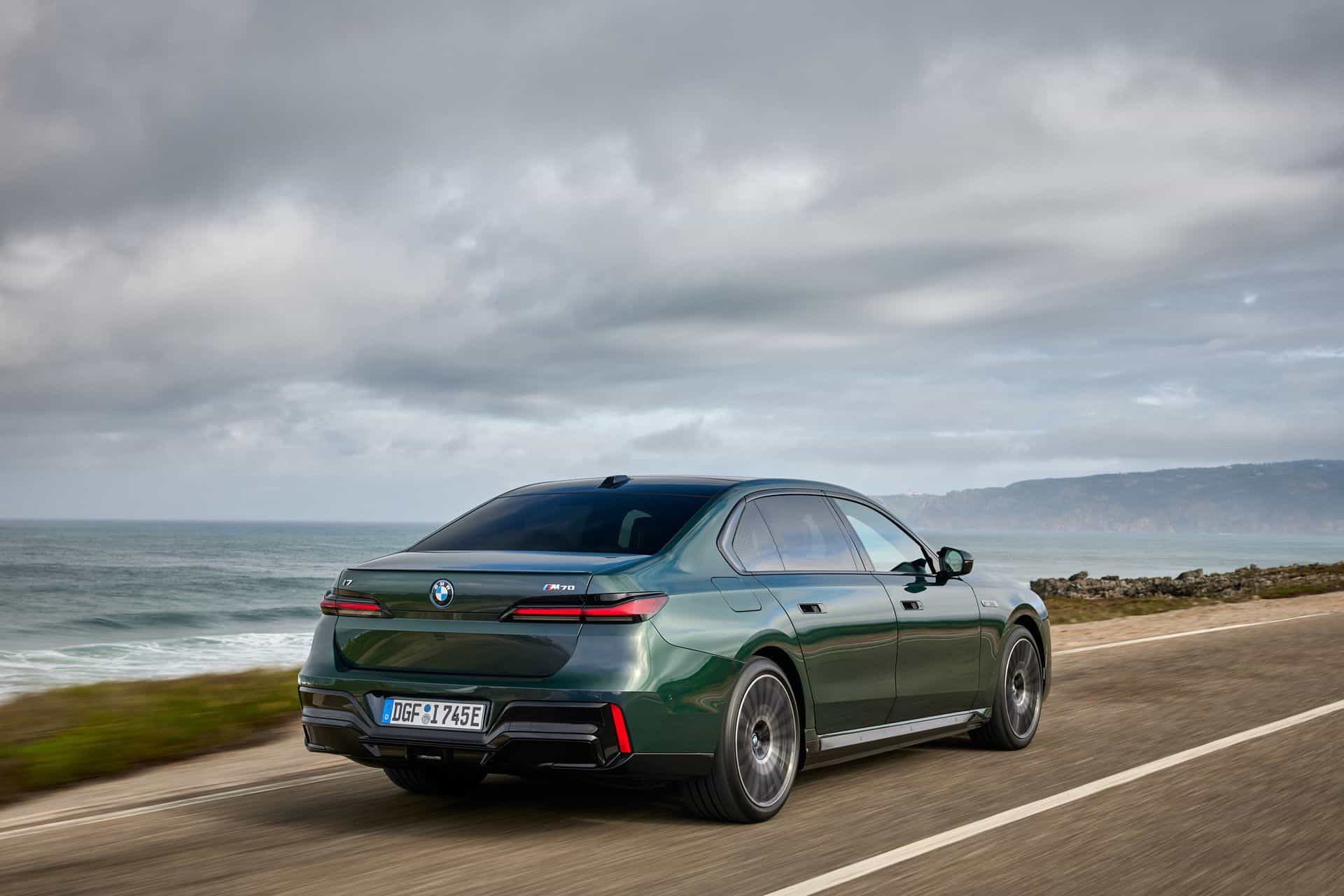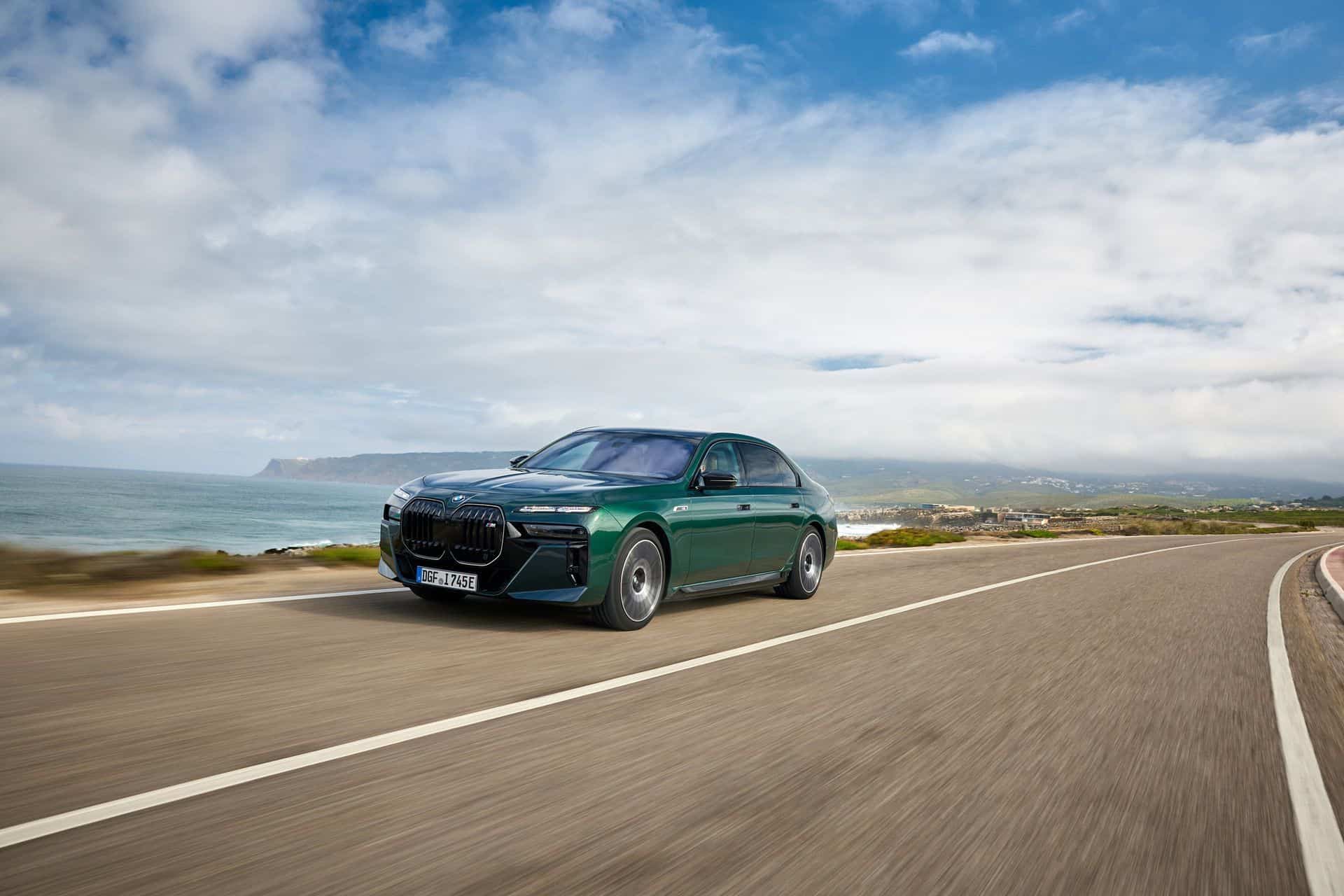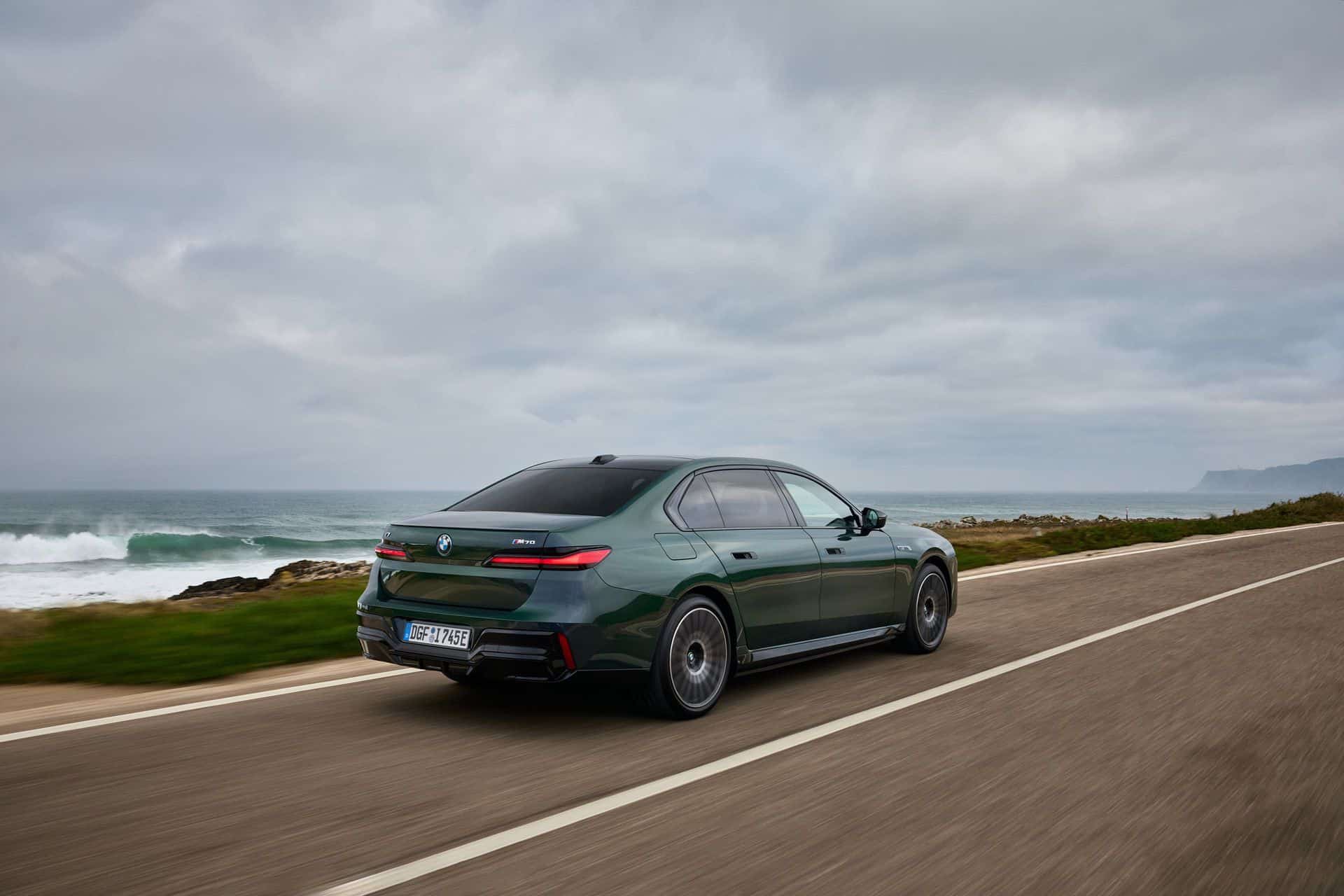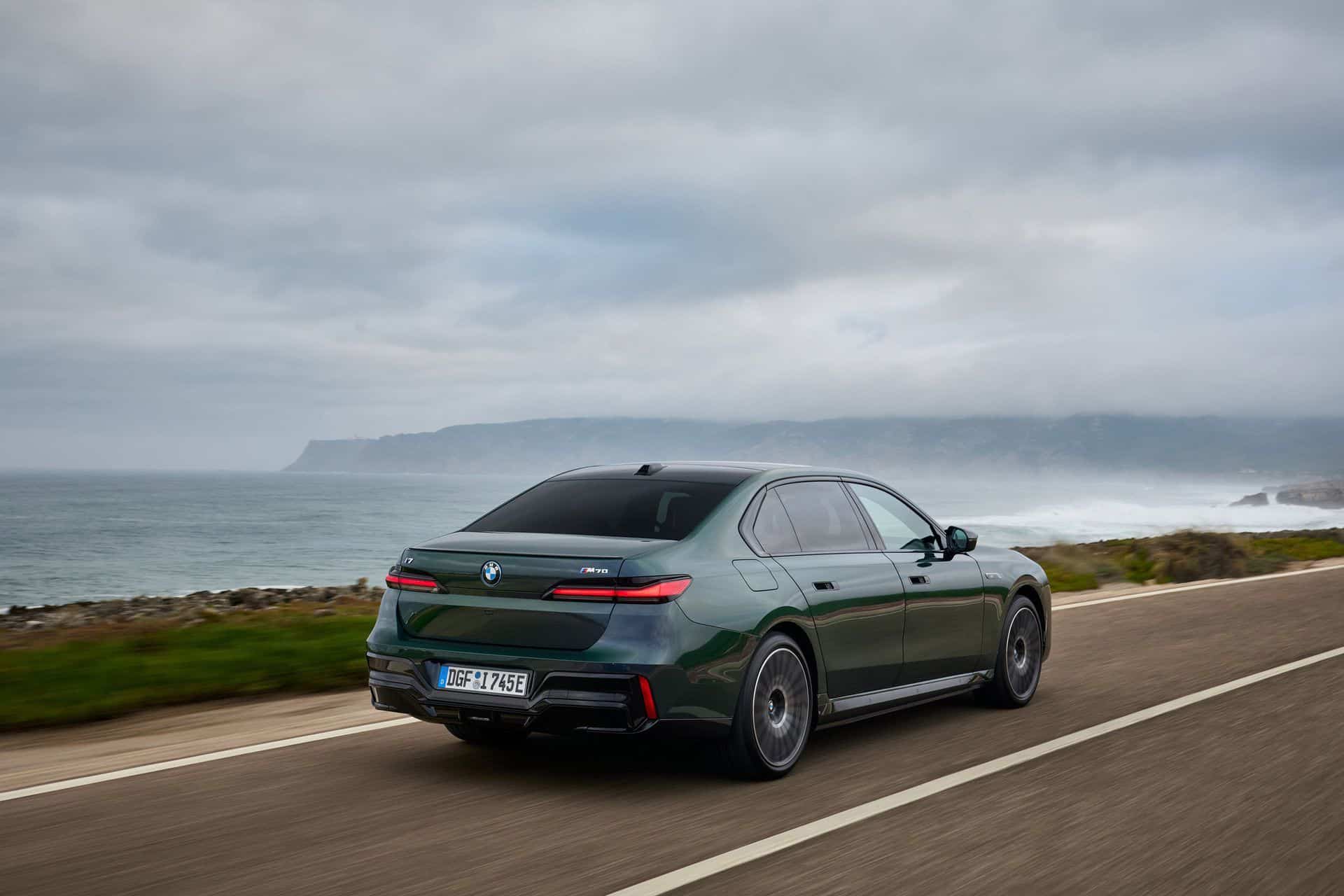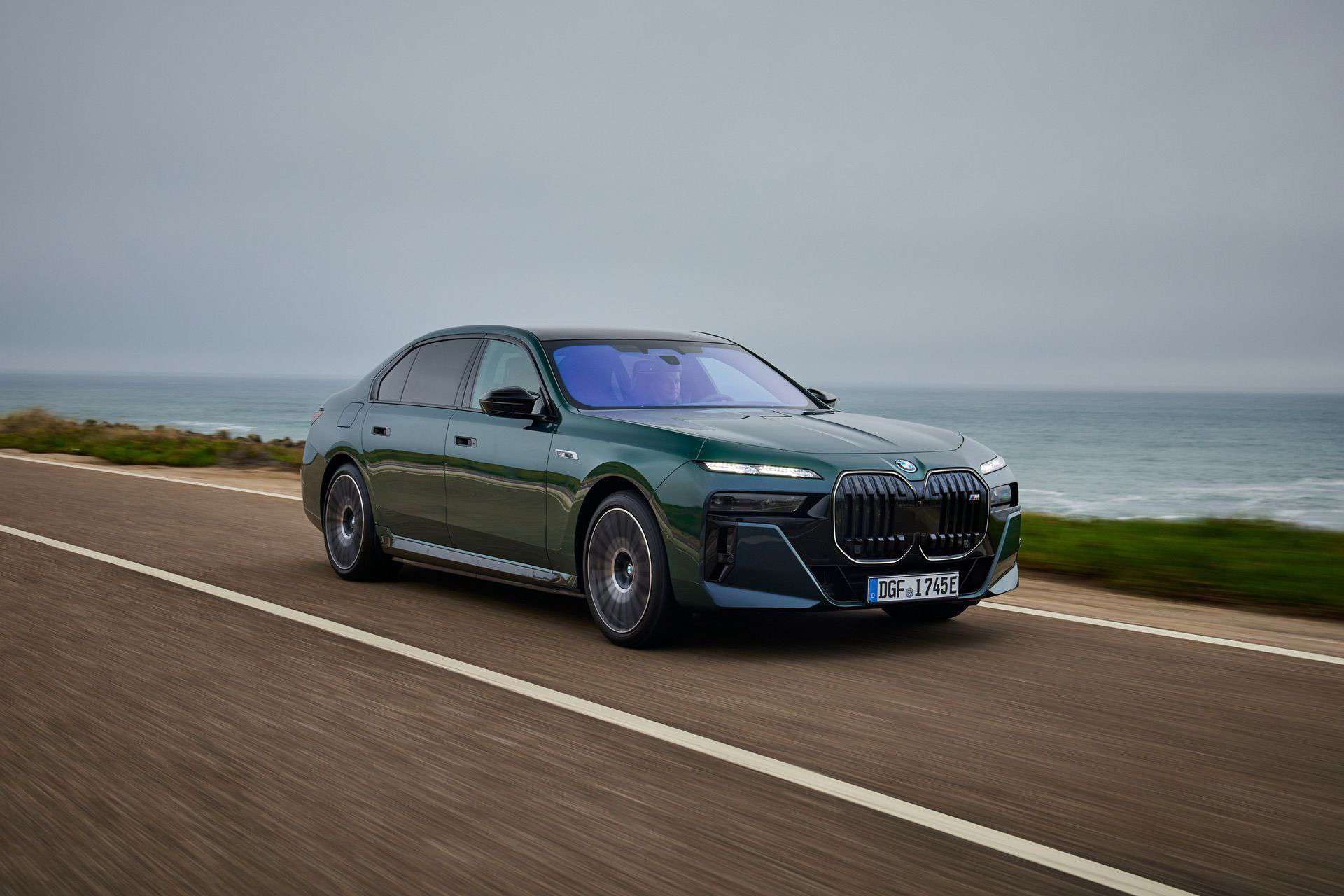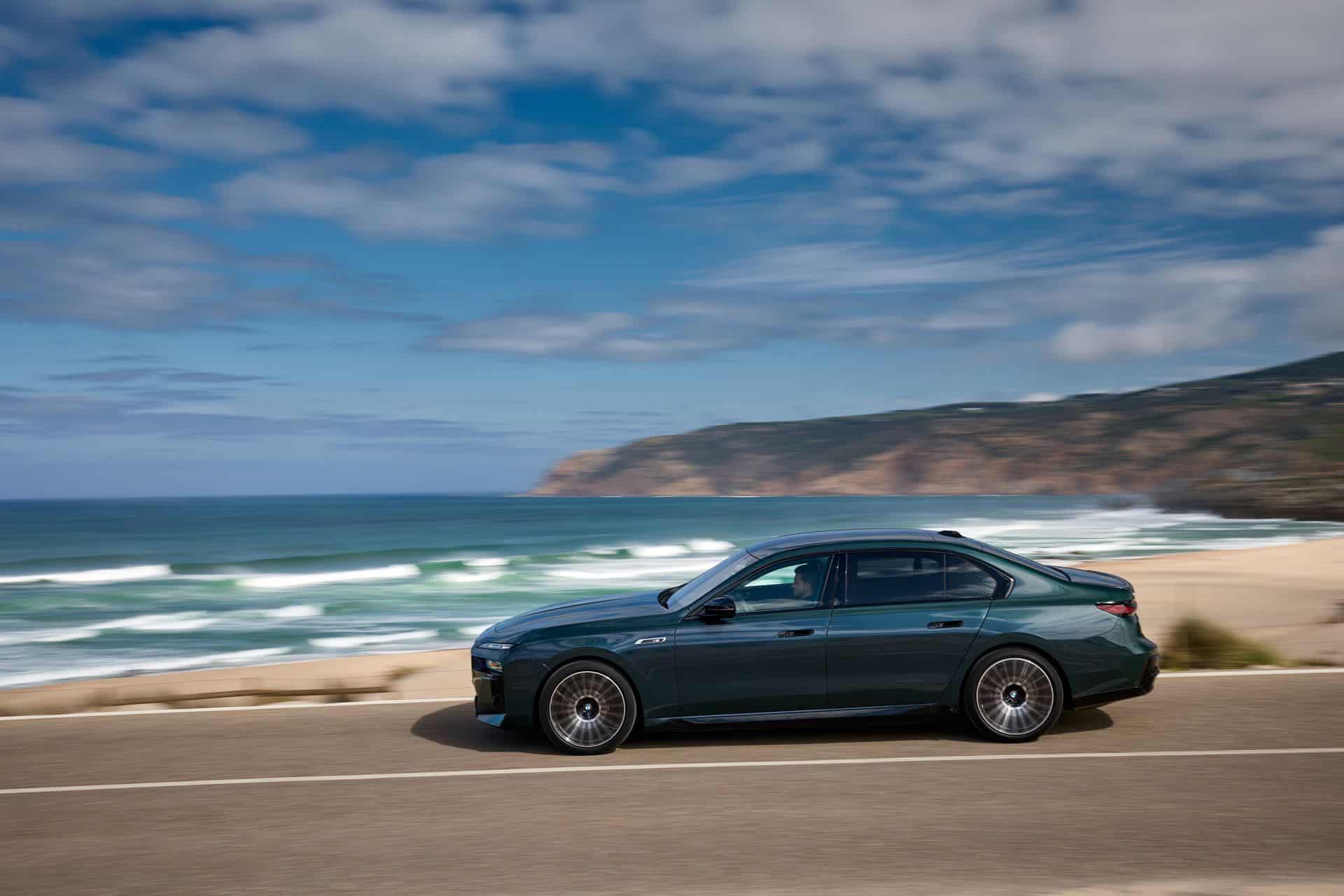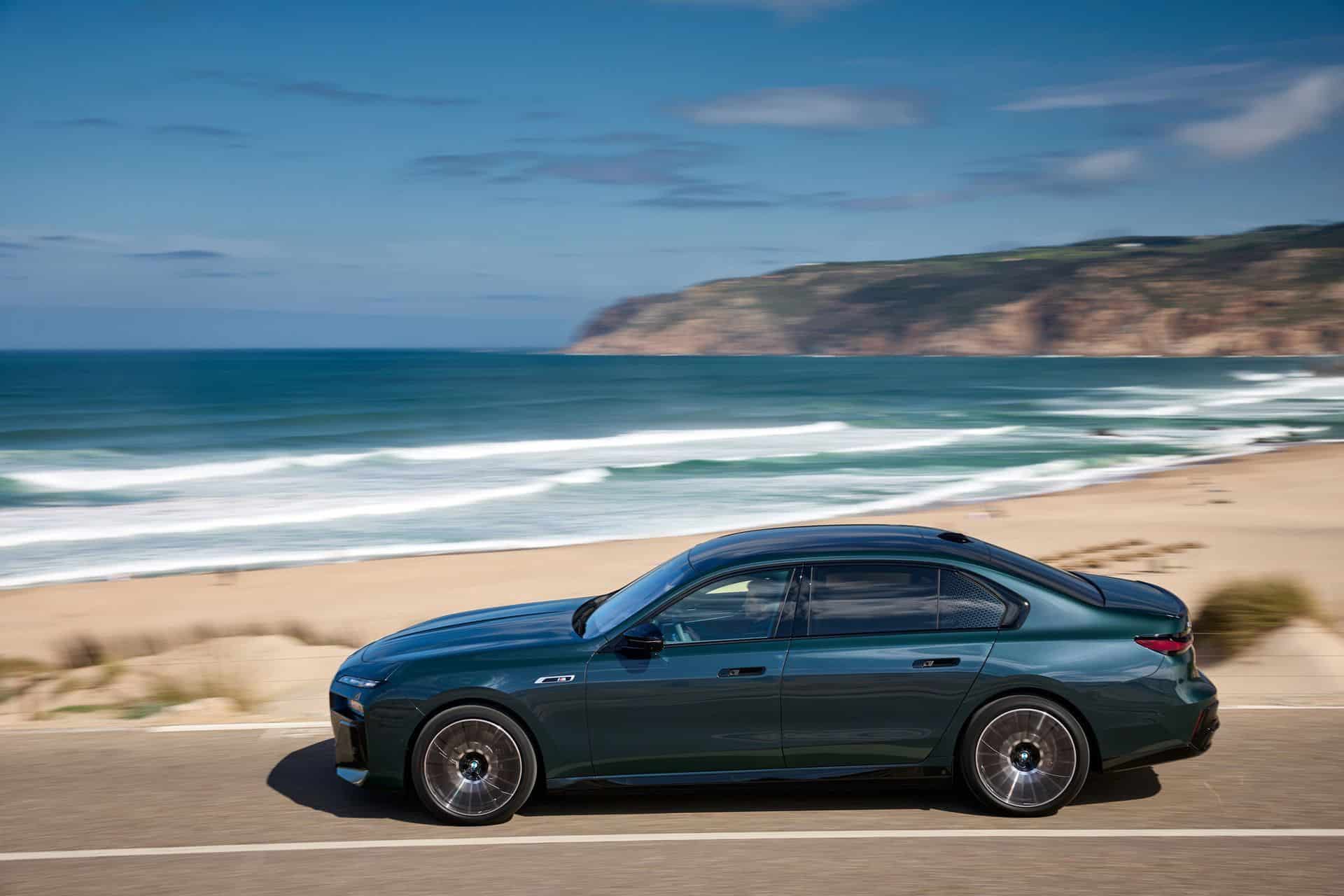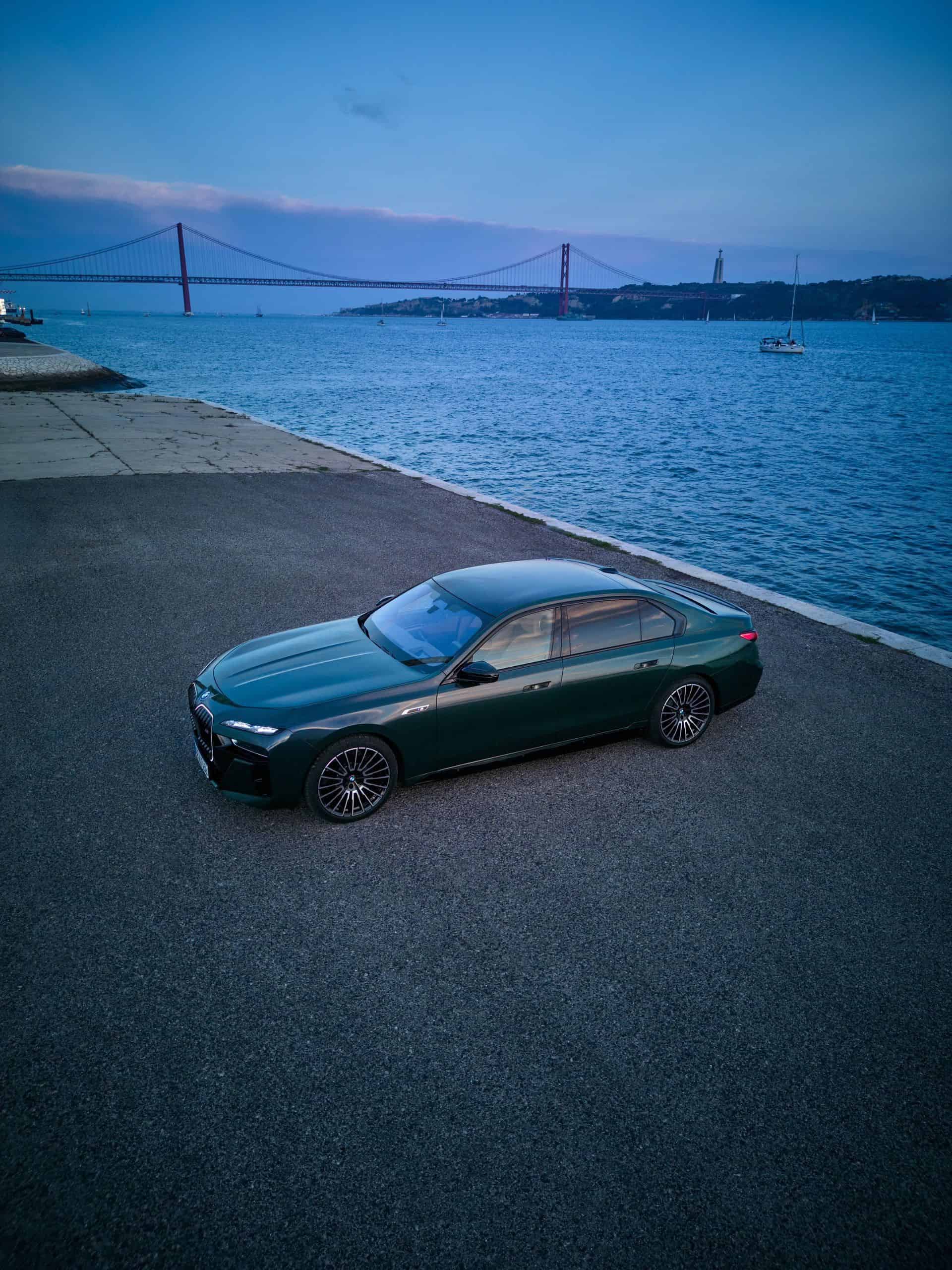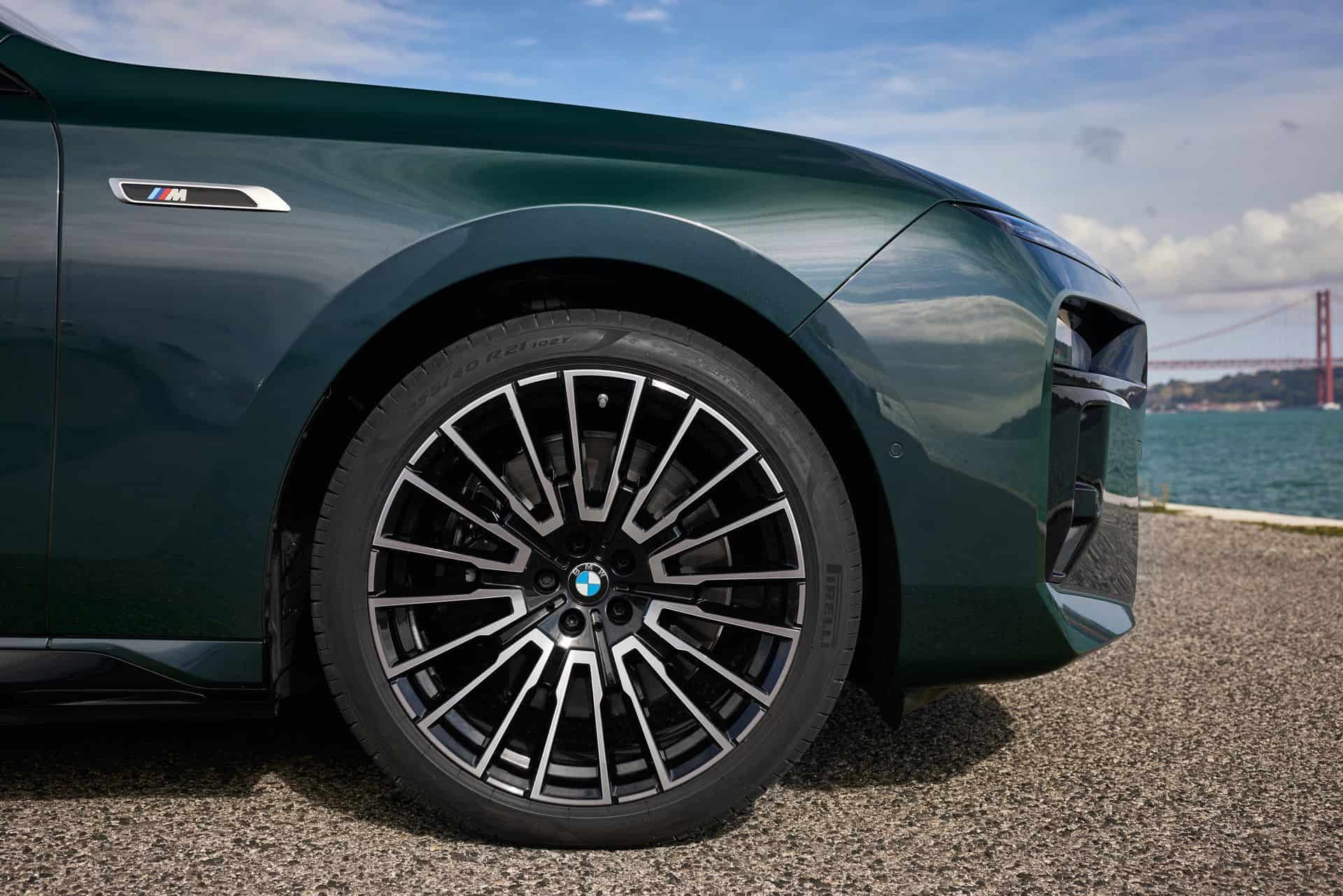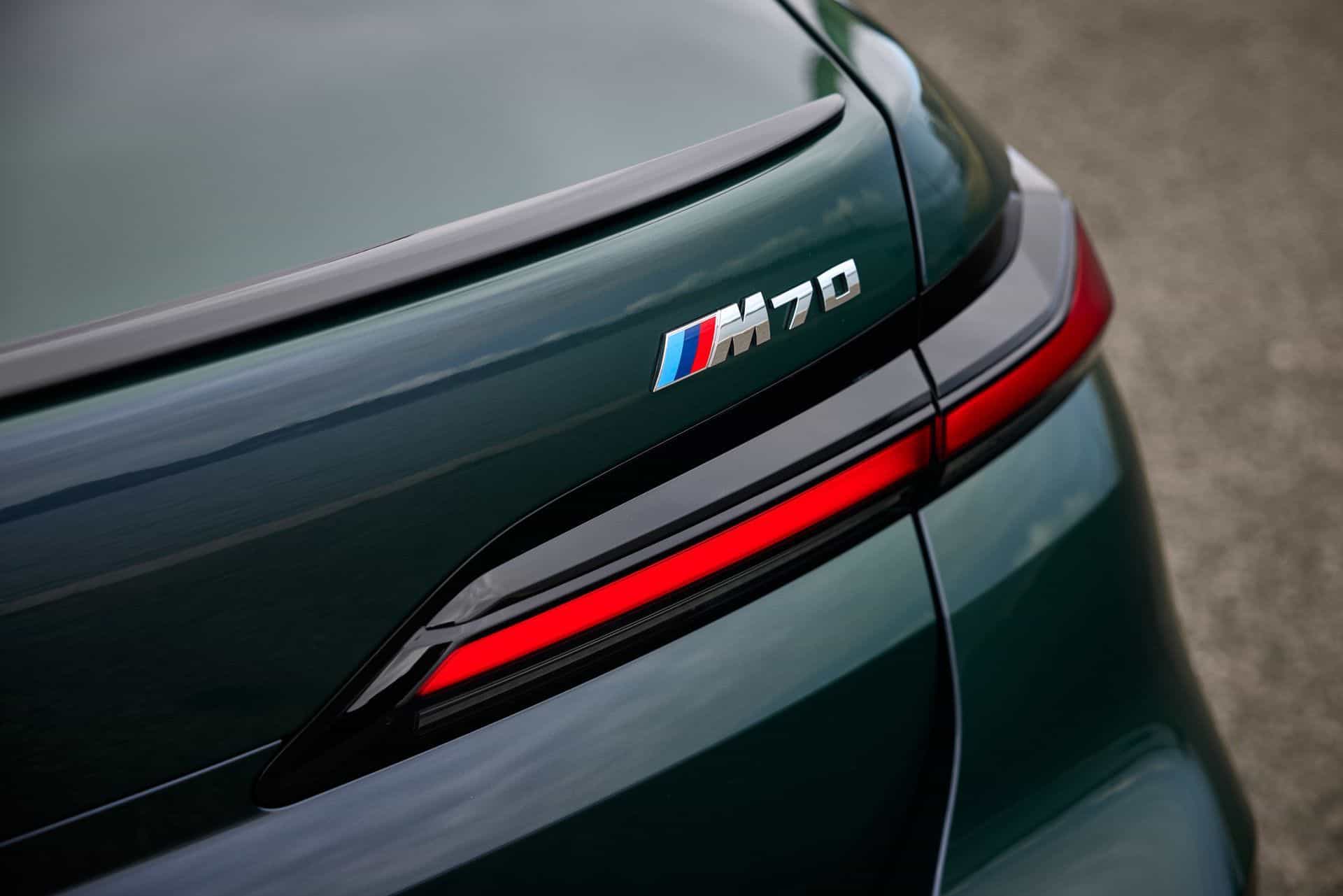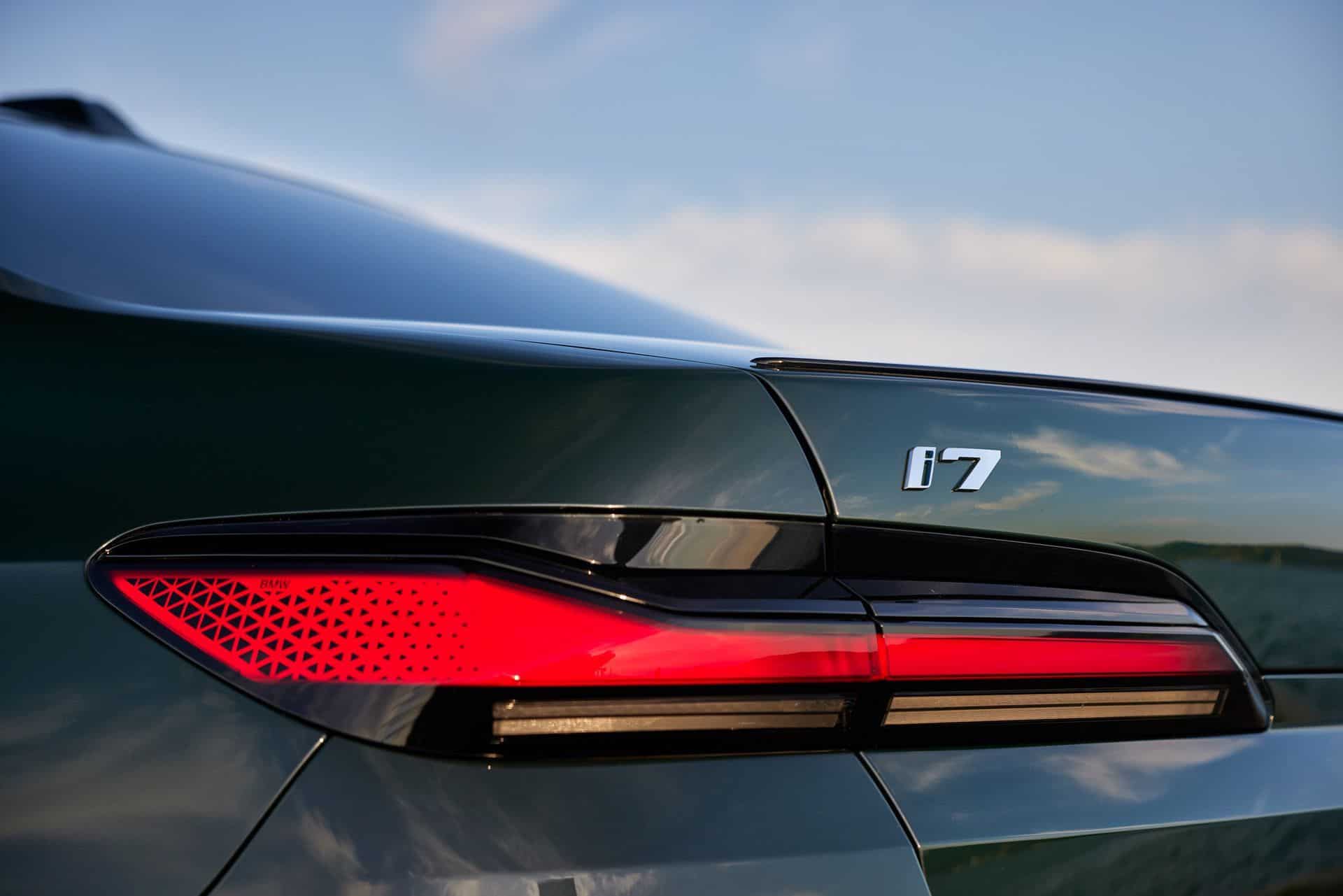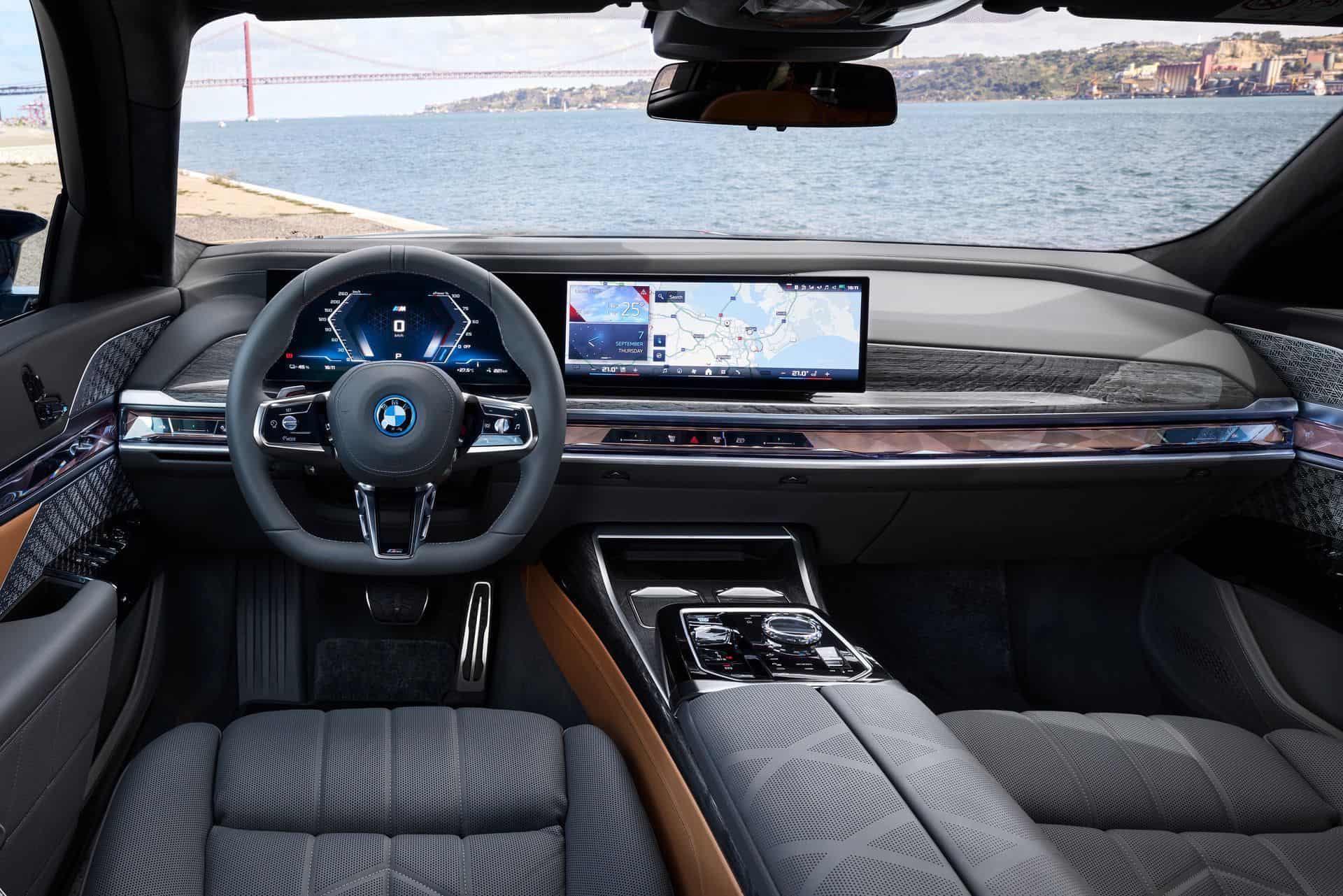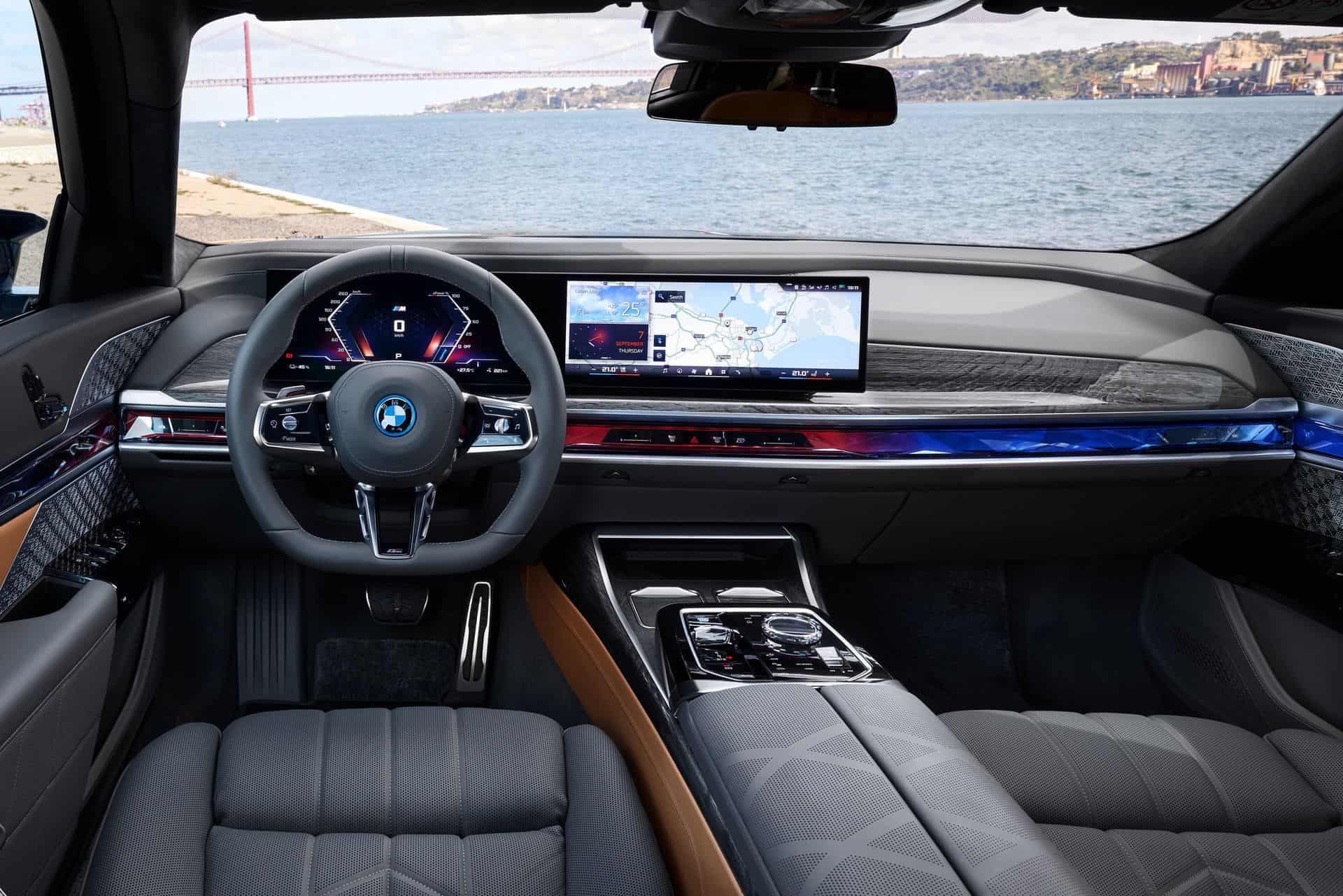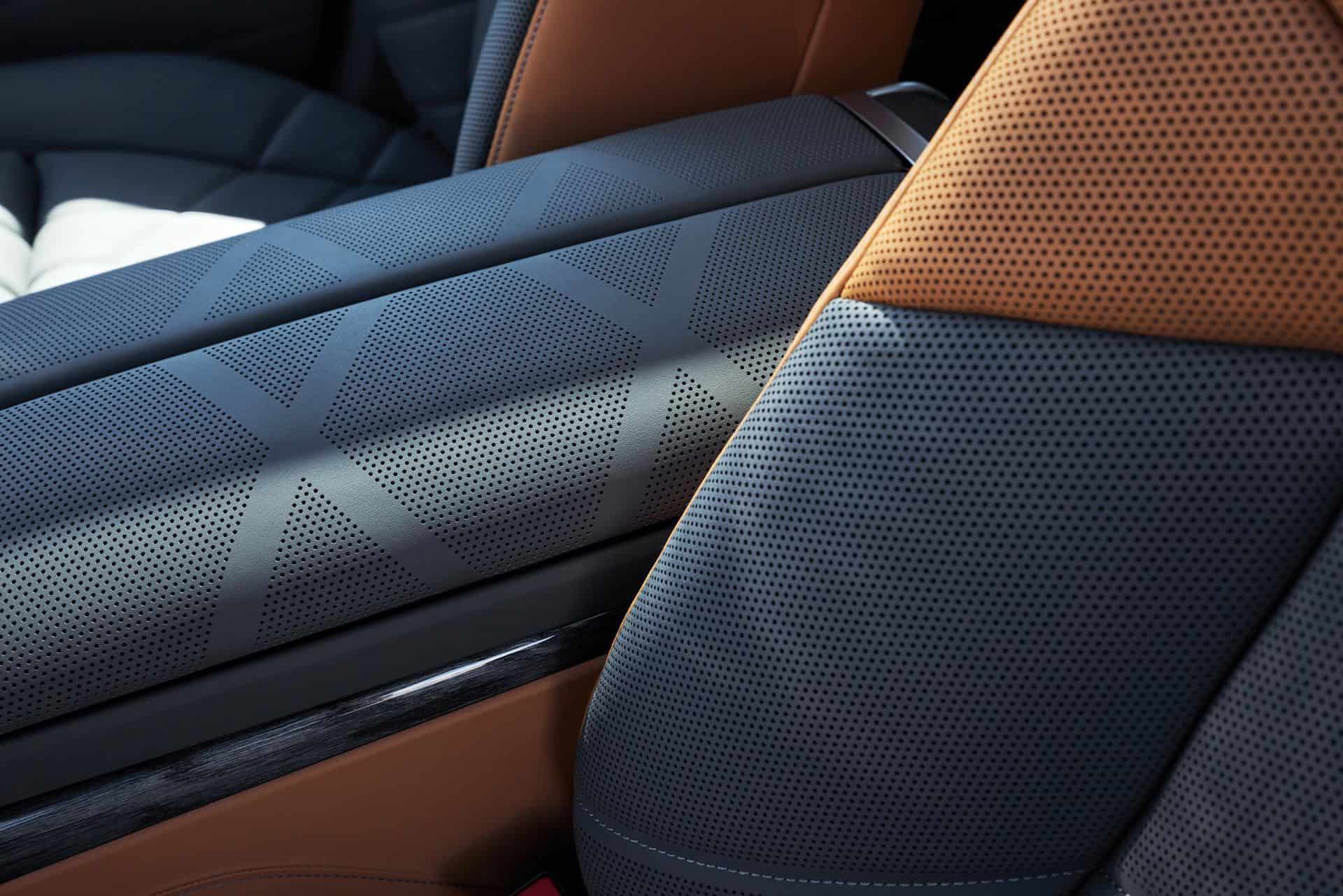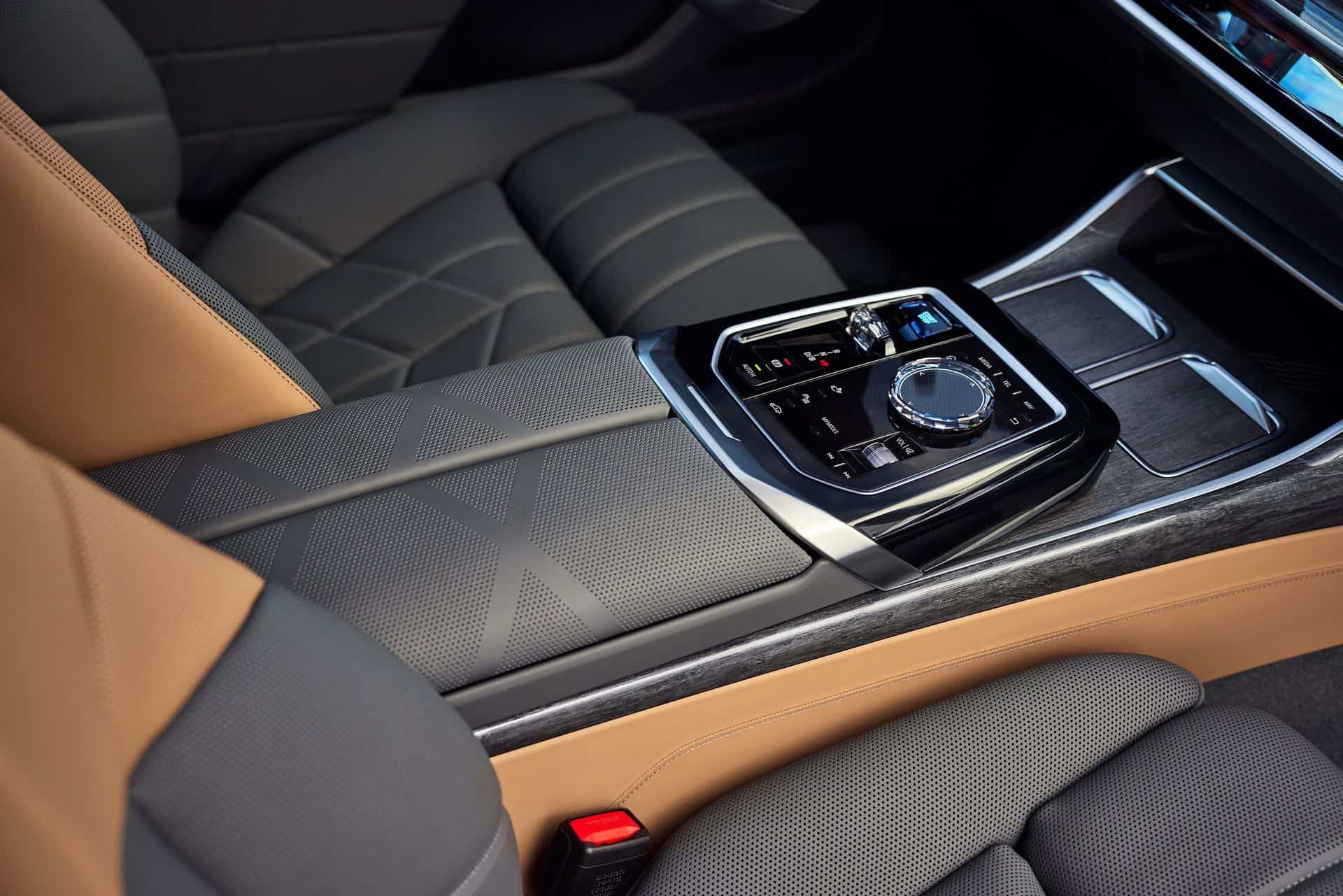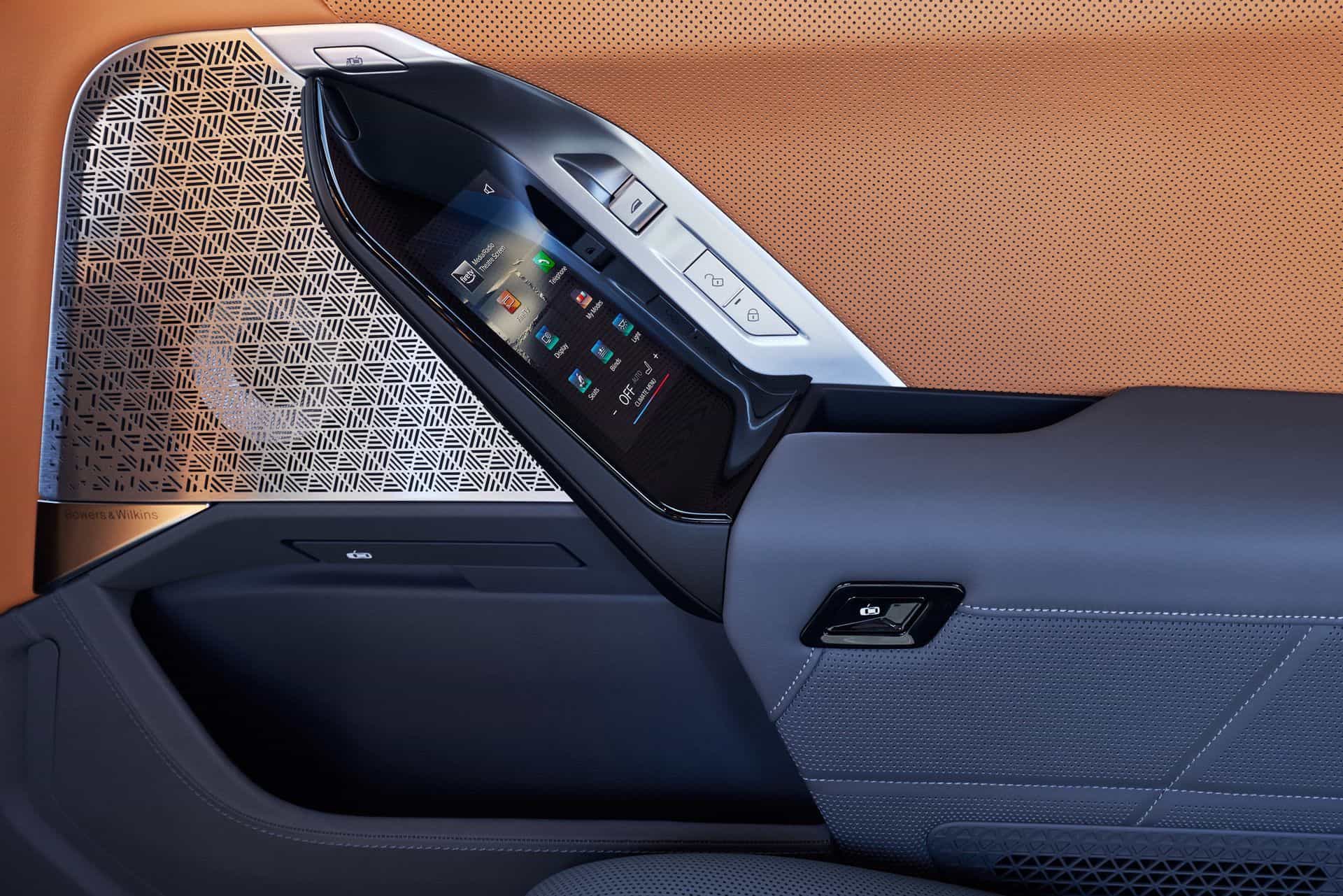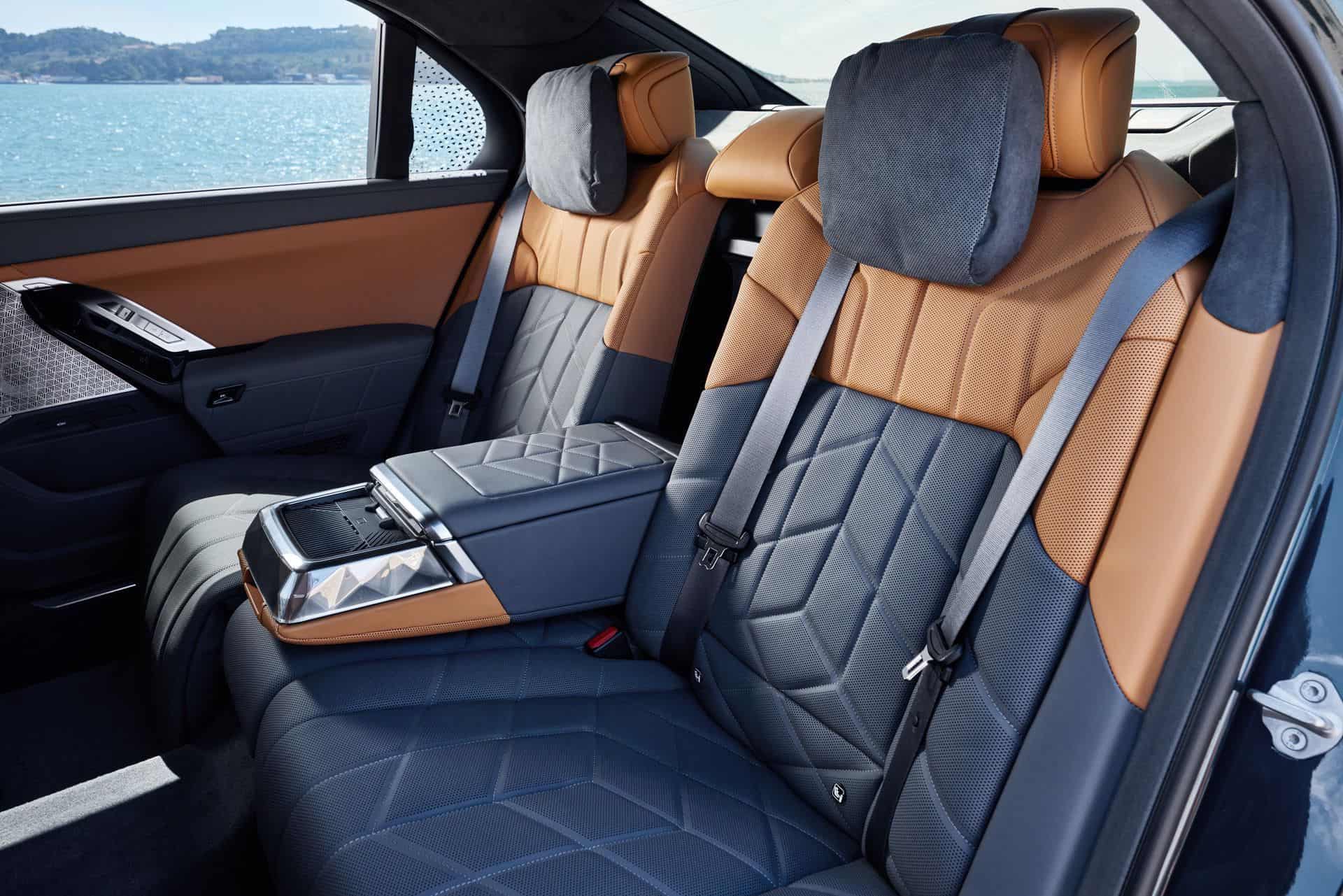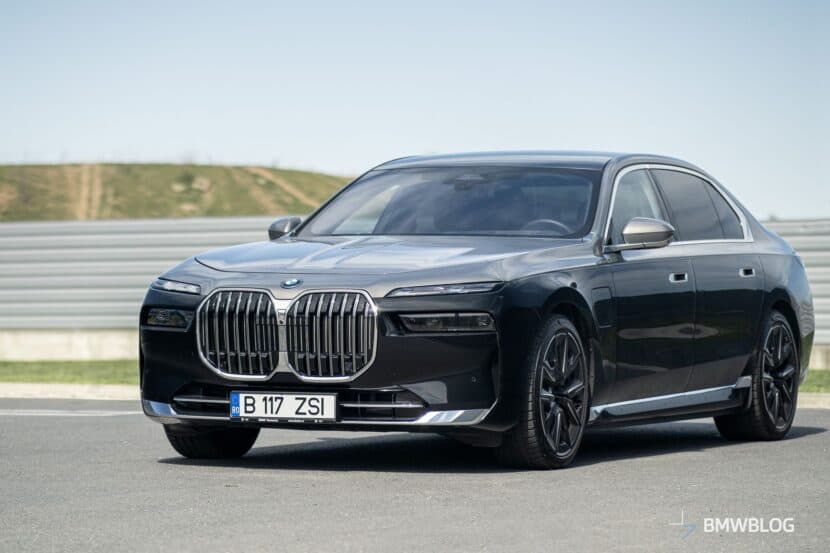Lisbon is my third home, following Chicago and Munich. In case you weren’t aware, Portugal serves as the primary choice for most automakers to launch their new products. And smartly so. Portugal, with its stunning landscapes, delectable cuisine, and exceptionally hospitable residents, ranks among the world’s most beautiful and welcoming countries. Moreover, it boasts some extraordinary driving roads, curiously with almost no traffic. So it comes as no surprise that BMW has once again headed down south to launch some new models: the BMW i7 M70 and i5 (stay tuned for that).
Why is there a BMW i7 M70?
First on my test list is the i7 M70, BMW’s most powerful electric car and one of the most expensive models they offer today. And I’m eager to see how it performs on the road. But before I get into the details, let me address a question that might be on your mind: Why does BMW need an i7 M70?
The answer is simple: Because the competition is fierce. The electric car market is booming, and there are many options to choose from. You have the Tesla Model S Plaid, which is fast but not very refined. You have the Lucid Air and the Porsche Taycan, which are both sleek and sophisticated. And now you have the i7 M70, which aims to combine the best of both worlds: performance and luxury.
There is also another subtle reason: With the V12, sadly, no more, BMW needed a new flagship. And because today it’s all about electrification, the i7 became the obvious candidate. Of course, it might be counteractive to put some M goodies into a nearly 6,000 lbs vehicle, but we’ve seen wilder things in the past. And as you’ll read below, the luxury mammoth doesn’t disappoint.
BMW i7 M70
Good
- Insanely fast!
- 100 BMW Individual colors
- High-tech and luxurious
Bad
- Expensive!
- Not the best front-end design
- Lack of physical buttons for AC functions
Fastest BMW Electric Vehicle
Now let’s talk specs. The third electric M Performance model after the i4 M50 and iX M60 packs more punch than both by offering a colossal 650 horsepower and 811 pound-feet (1,100 Newton-meters) of torque. The latter figure is attainable only when the M Launch Control is activated, or if the M Sport Boost function is turned on. In Sport mode, you still get a massive 748 lb-ft (1,015 Nm).
Speaking of the iX M60, the rear motor was inherited from the top EV crossover. It’s a a six-phase dual inverter with a longer rotor delivering 483 hp (360 kW) and 479 lb-ft (650 Nm). The front motor comes from the i7 xDrive60 outputting 255 hp (190 kW) and 296 lb-ft (401 Nm).
3.5 seconds to 60 mph
As the most potent among electric vehicles, the i7 M70 claims the title of the fastest electric BMW to date. It achieves a 0 to 60 mph (96 km/h) sprint in just 3.5 seconds, or 3.7 seconds to reach 62 mph (100 km/h) from a complete stop. I did a 0-60 mph test and I came close to the official figure: 3.6 seconds.
When pushing the pedal to the metal, the BMW i7 M70 continues accelerating until it hits an electronic top speed limiter at 155 mph (250 km/h). These remarkable performance figures are especially noteworthy considering the considerable weight of the car, which tips the scales at 5,929 pounds for the US model or 2,695 kilograms.
Tuned by ///M
Complementing the added power, BMW also changed a few things for the M70 spec. Firstly, the most powerful 7 Series comes with an exclusive tuning for the air suspension, along with a unique steering calibration. There is also an upgraded brake system – much needed – with four-piston fixed-caliper front brakes and single-piston floating-caliper rear brakes. The rotors are actually 20 mm wider at the front than in the “base” BMW i7.
Of course, it’s an M car, so we all know that the car has to be stiffer and more dynamic. The air dampers were also modified for the BMW i7 M70 to better handle the lateral forces under high load. BMW engineers told me that they also tighten the bushings and bearings. The standard package for the M70 includes rear-wheel steering and active roll stabilization, which are also much needed in a car of this size.
Charging and Electric Range
As much as I love the nerdy M talk, the BMW i7 M70 is still an electric car. Therefore, charging and range are equally, if not more important. Mounted in the underbody, the i7 M70 boasts a large battery pack with a 101.7-kWh usable capacity that can be charged DC at up to 195 kW. In this case, it takes 34 minutes to charge from 10 to 80 percent. Thanks to a 32 Amps onboard charger, the luxury limousine is capable of AC charging at up to 22 kW as standard in Europe and 11 kW in the United States.
In Europe, the BMW i7 M70 brings charging with multiple contracts. There are actually 5 separate contracts which BMW says it’s the first to the market.
With 21 inch wheels, the BMW i7 M70 has an EPA rating of 291 miles. The European WLTP standard is a lot more generous: 303 – 348 miles (488 – 560 kilometers). Of course, it also comes with a pre-conditioning function which got a bit smarter as well. By inputting a destination in the iDrive system, you can initiate pre-conditioning and route planning. The system will not only display the estimated state of charge at your destination but also allows for customized charging settings at the destination while efficiently guiding you to available charging stations along the way.
MaxRange Mode
The BMW i7 M70 also introduces a new mode – Max Range – which will also transfer to the new 5 Series and i5. To activate this mode, simply press the button and you’ll get up to 25% more electric range. However, the mode comes with certain limitations such as a reduced speed limit of up to 90 km/h (56 mph), decreased engine power, and reduced seat and steering heating as well as ventilation in the car.
Drives Smaller Than It Is
Thankfully, I’m the sole occupant during this test drive, giving me the liberty to indulge in a bit of mischief and unleash a stream of exclamations. And I vividly recall my initial reaction when I first unleashed the full throttle of the new BMW i7 M70, but unfortunately, I can’t publish it here. But you might imagine what it was.
First impressions, this BMW i7 M70 is a ///Monster of a car. It is impressively quick off the line managing to hide its heft. The power delivery is brutal, especially when you pair it with the Launch Control and the Boost Mode which gives you around 60 lb-ft of torque for 10 seconds at a time. It’s genuinely unnerving how quickly you can attain those top speeds, particularly given the remarkably hushed nature of the M70, which might distract you from monitoring the speedometer.
The steering is also more engaging than in the i7 xDrive60, in both Comfort and Sport. As you steer into tight bends, you will get more feedback from the road and feel a more direct connection with the front wheels. Of course, most of the time is still dead off center, as with most modern BMW electric power steerings.
There is one bit that baffled me though and I had to confirm it with the BMW engineers. When experiencing a significant G force in a corner, the power is restricted until the wheel straightens out. Initially I thought that maybe that’s an artificial limitation of the torque, but it’s actually related to the extra power at the rear. So when you push the car hard, you might feel that torque reduction due to the lateral forces.
Great Braking System
As you’d expect, the brakes are strong and smooth, with regenerative braking that can be adjusted via paddle shifters. True one-pedal driving is available as well by moving the shifter to the B position. I won’t dwell too much on this since the idea of this test drive was really to push the car’s driving dynamics, rather than going for the ultimate efficiency.
Thanks to the more powerful motor in the rear, the BMW i7 M70 feels close to what the “Ultimate Driving Machine” used to be. The rear-end is quite playful, even with DSC ON. I did cancel out all the nanny controls – only for a few minutes – and that rear-end stepped out easily putting a smile on my nervous face.
Thanks to the upgraded rear motor, the BMW i7 M70 offers a glimpse of what the “Ultimate Driving Machine” once was. The rear end displays a spirited character, even with DSC (Dynamic Stability Control) engaged. I did temporarily deactivate all the safety systems – albeit only for a brief period – and it was effortless to coax the rear end into a playful slide, bringing a grin to my face.
A BMW engineer told me that even when DSC is off, the slip control is always on because otherwise, the massive torque could damage some of the components. Yet, based on the throttle angle and throttle velocity, the accepted slide is wide with DSC off.
Of course, this is a heavy car, and while there is a fair amount of body roll, it’s effectively managed. Naturally, the rear-wheel steering feature adds unexpected agility when navigating tight corners. It’s also quite useful in tight city centers by easily maneuvering the M70 through narrow streets.
Still Comfortable, Even When Pushed Hard
Portugal can have equally perfectly smooth roads and some full of potholes. So this is the perfect scenario for testing. The i7 M70’s suspension impressively absorbed road imperfections, and even in its Comfort mode, it consistently maintains control when traversing rough terrain.
However, in spite of its sportier character, the BMW i7 M70 hasn’t compromised any of the comfort that has distinguished the i7 as an exceptional sedan. Overall, the body remains well-controlled and the ride maintains the plush and gentle character of a 7 Series. Even in the Sport or Sport+ driving modes, the ride doesn’t come close to feeling as rigid or unsettled as one might anticipate.
Let’s talk a bit about the driving modes because they are slightly different than in the i7 xDrive60. As is the case with most, if not all, M Performance cars, the gap between Comfort and Sport is quite significant. The idea is to clearly separate them giving the car a dual character. But if you were to compare the Comfort mode of the M70 vs. the 60, then I can report that it feels a bit stiffer in the former. Same goes for the Sport mode, things are dialed up a bit more than in the i7 60.
Overall, the BMW i7 M70 delivers a delightful driving experience on winding roads, exhibiting the handling characteristics of a smaller, lighter vehicle. Furthermore, it offers comfort and serenity on highways, and even through curvy backroads when you relax the acceleration pedal. On the downside, it can be a bit noisy with the optional summer tires.
Highway Assistant Level 2+
Speaking of effortless, I need to mention the latest ADAS features in the BMW i7 M70. BMW calls it Level 2+ (Level 3 is coming later this year). The system is called the Highway Assistant which enables hands-free and pedal-free driving on expressways. This capability is made possible through the use of 12 ultrasonic sensors, six cameras, five radar sensors, and an infrared sensor tracking the driver’s eye movement. You can drive hands free up to 130-135 km/h (around 85 mp) and it’s now available in Germany after U.S. and Canada received it last year.
An interesting tidbit I learned over dinner: The European-spec BMW i7 M70 is a bit slower at changing the lanes compared to US-bound models. The reason? Bling bling: regulations! In most markets, but the United States, the car needs to wait 1 second before it can initiate a lane change. Then the car starts moving towards the lane markings, but it cannot cross it before 3 seconds pass. In the U.S., the lane change starts immediately and it only needs to wait 1.5 seconds before crossing into the next lane.
Also, for every lane change in Europe, you need to confirm it via the stalk. In the U.S., you initiate the maneuver once, like a highway exit, and the car will change lanes without any additional input.
Neat and geeky stuff!
Other Goodies: iDrive 8.5, automatically door opening, 100 individual colors
My test car came with the new BMW iDrive 8.5 which is exciting because it fixes one of my biggest pet peeves: AC Controls. The user interface and user experience has been improved to the point where – maybe – I’ll stop complaining in every video review about the lack of physical buttons. It’s also a bit snappier and the voice controls are definitely improved. QuickSelect is a nice addition as well. In Germany, you also get the Bundesliga app which will allow you to watch live football. Soccer for us Yankees.
The Theater Screen is also part of the i7 M70 options list and while it’s expensive, I highly recommend it in the car. The 8K 31 inch resolution screen is stunning and pairs well with the Bowers & Wilkins sound system. There are a few annoying things though. For starters, there are two operating systems in the car: iDrive 8.5 powering the infotainment system and the door Touch Pads, and the Fire TV for the Theater Screen.
It gets even more annoying from here. You can’t watch Bundesliga, for example, on the Theater Screen because it’s not part of the Fire TV App Store. On top of that, Fire TV is also not available in all markets. Apparently BMW is already working on a solution for this and we should see it in the upcoming facelift.
On the positive side, there is a new feature in the car: contact-free opening and closing function for the driver’s door. When specced with the BMW Digital Key Plus, the door of your BMW i7 M70 will also automatically open as you approach the car. Of course, as long as you have a smartphone in your pocket and the My BMW App.
Should I Buy One?
There is a reason why the BMW i7 M70 costs $169,495 – it comes packed with all the unthinkable features and packages, and on top of that, with nearly 100 BMW Individual colors to pick from. But should you buy one?
The answer becomes a tad more intricate in this scenario. While the BMW i7 xDrive60 suffices for most individuals, there exists a segment of customers who desire a heightened level of performance and luxury, reminiscent of the V12 760i. This is precisely where the BMW i7 M70 steps into the picture, offering a unique blend of exclusivity and formidable power.
It grants exceptionally affluent individuals the coveted privilege of boasting supremacy over all other i7 buyers. Although other variants provide nearly comparable speed and an equal dose of opulence, there is unequivocally no denying that the BMW i7 M70 caters to those with an unyielding pursuit of the absolute best money can procure.
BMW i7 M70 Review
Exterior Appeal - 7
Interior Quality - 9.5
Steering Feedback - 8
Performance - 9
Handling - 8.5
BMWness/Ultimate Driving Machine - 8
Price Point - 7
8.1
While the BMW i7 xDrive60 suffices for most individuals, there exists a segment of customers who desire a heightened level of performance and luxury, reminiscent of the V12 760i. This is precisely where the BMW i7 M70 steps into the picture, offering a unique blend of exclusivity and formidable power.


